Creating a spa-like environment requires thoughtful design choices that engage all the senses and promote deep relaxation. Whether you're designing a commercial spa or transforming your home into a wellness sanctuary, the right decor elements can make all the difference. From calming color palettes and natural materials to innovative lighting solutions and biophilic design elements, successful spa decor creates an immersive experience that helps clients disconnect from daily stress. The key lies in developing complete design themes rather than focusing on individual decorative pieces, ensuring every element works harmoniously to create a cohesive atmosphere of tranquility and rejuvenation.
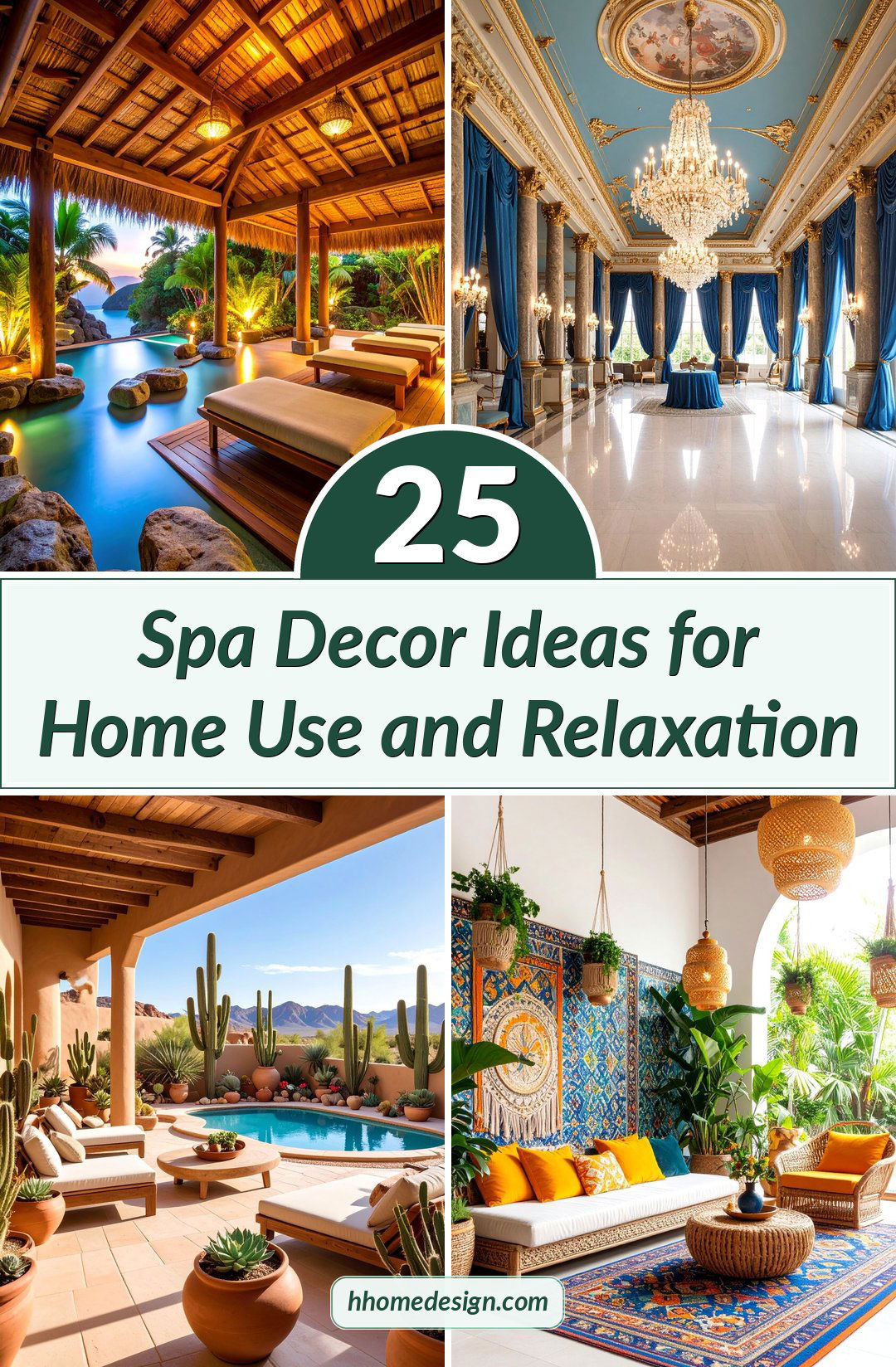
1. Zen Minimalist Spa with Natural Wood Accents

Creating a zen minimalist spa design centers on simplicity and natural harmony through clean lines and organic materials. This approach features light bamboo flooring, natural wood wall panels, and simple geometric furniture that promotes mental clarity. The color palette remains neutral with soft beiges, warm whites, and natural wood tones that create visual peace. Essential elements include low-profile seating arrangements, minimal decorative objects, and strategically placed stones or sand features. Lighting consists of soft, diffused fixtures that cast gentle shadows, while carefully selected plants like peace lilies add life without overwhelming the space. This design philosophy eliminates visual clutter to help clients focus entirely on relaxation and mindfulness during their spa experience.
2. Biophilic Spa Oasis with Living Plant Walls
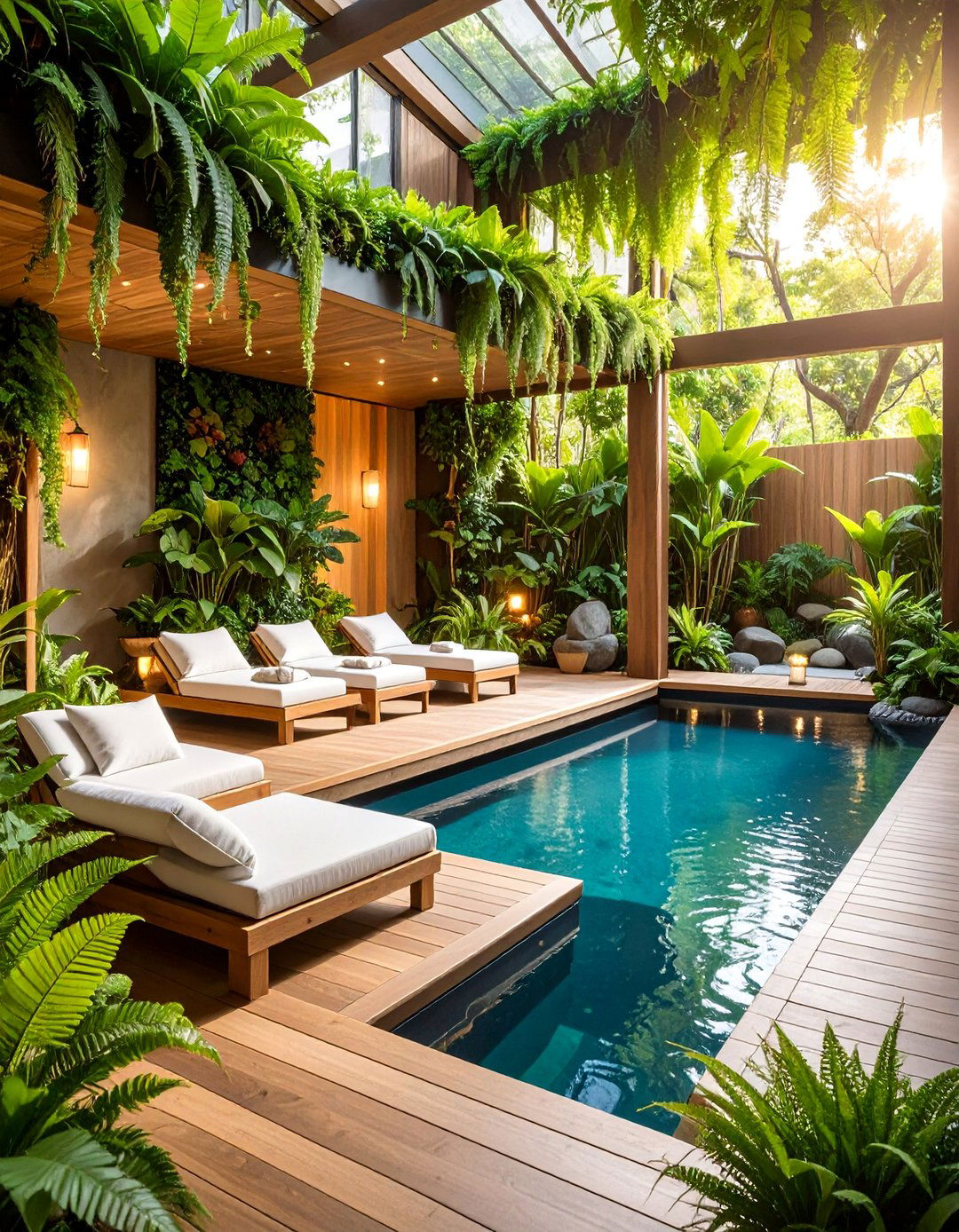
Biophilic spa design brings nature indoors through extensive use of living plant walls, natural stone surfaces, and organic water features. This comprehensive approach includes vertical gardens filled with air-purifying plants like ferns and pothos, creating natural humidity and fresh oxygen. Stone pathways lead through treatment areas while wooden bridges span small water features that provide soothing sounds. Large windows maximize natural light exposure to support both plant growth and human circadian rhythms. The design incorporates natural materials like river rocks, reclaimed wood, and slate tiles throughout all surfaces. Seating areas feature organic shapes and earth-toned cushions that blend seamlessly with the natural environment, creating an immersive forest-like experience that reduces stress and promotes healing.
3. Modern Luxury Spa with Metallic Accents
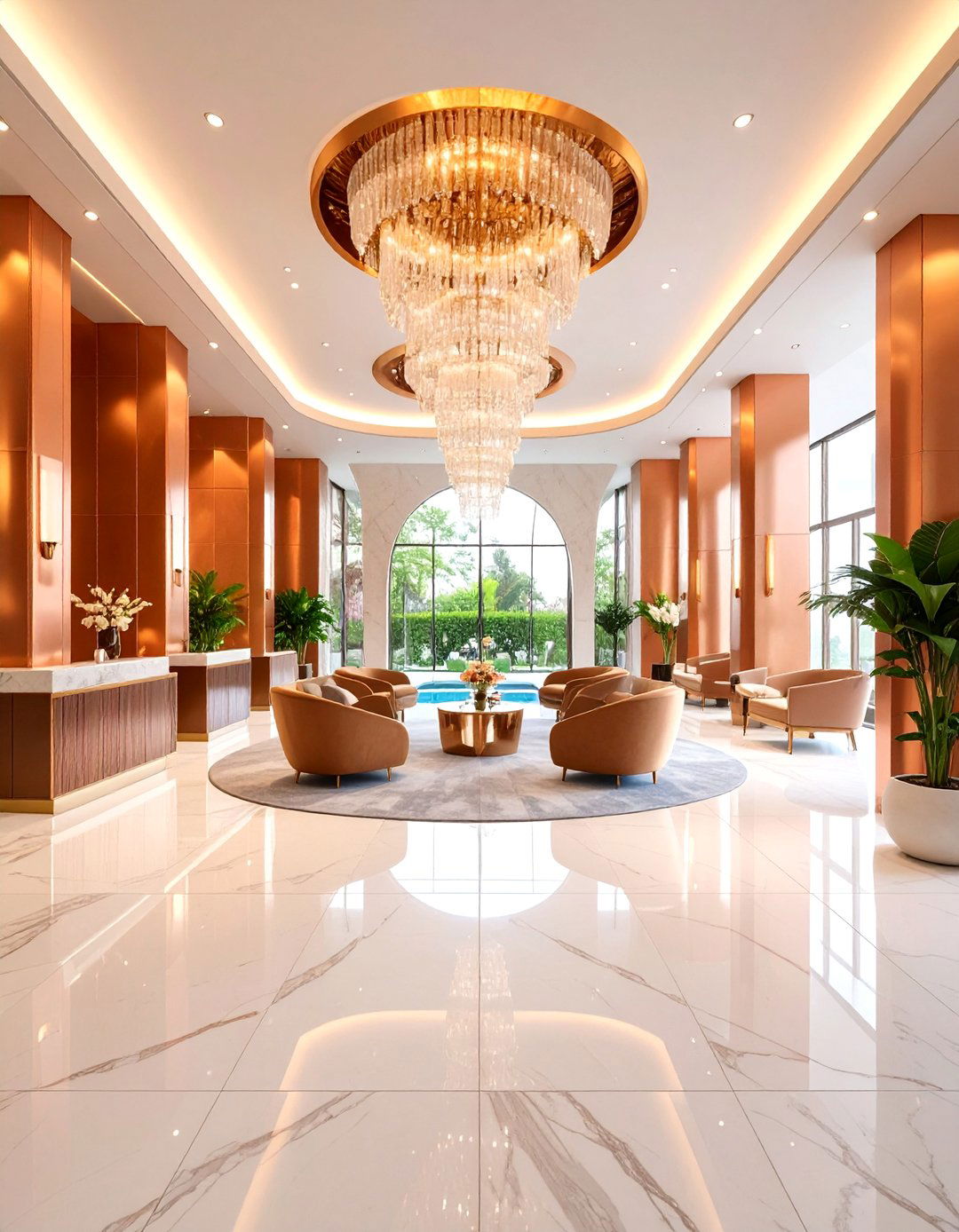
Contemporary luxury spa design combines sleek lines with premium metallic finishes to create sophisticated elegance throughout the space. This design features polished stainless steel fixtures, brushed gold hardware, and copper accent walls that reflect ambient lighting beautifully. Furniture includes modern geometric chairs with velvet upholstery in deep jewel tones, glass tables with metal bases, and custom-built reception desks with integrated lighting. The color scheme balances neutral backgrounds with metallic highlights, creating depth and visual interest. High-end materials like marble countertops, porcelain tiles, and crystal chandeliers establish a premium atmosphere. Technology integration includes digital controls for lighting and temperature, while luxury amenities like heated towel racks and automated aromatherapy systems enhance the sophisticated client experience.
4. Bohemian Tropical Spa with Colorful Textiles

Bohemian tropical spa design celebrates vibrant colors, diverse textures, and global cultural influences to create an energizing yet relaxing environment. This approach features rich tapestries, colorful mosaic tiles, and eclectic furniture pieces that tell stories of distant travels. The space includes hanging macramé planters filled with tropical plants, wicker seating with bright cushions, and carved wooden sculptures from various cultures. Color palettes embrace warm oranges, deep purples, emerald greens, and sunset yellows throughout fabrics and decorative elements. Lighting incorporates Moroccan lanterns, string lights, and colored glass fixtures that create magical ambiance. Natural materials like rattan, jute, and bamboo add organic textures while maintaining the free-spirited aesthetic that encourages creative expression and cultural appreciation.
5. Scandinavian Spa with Hygge Elements
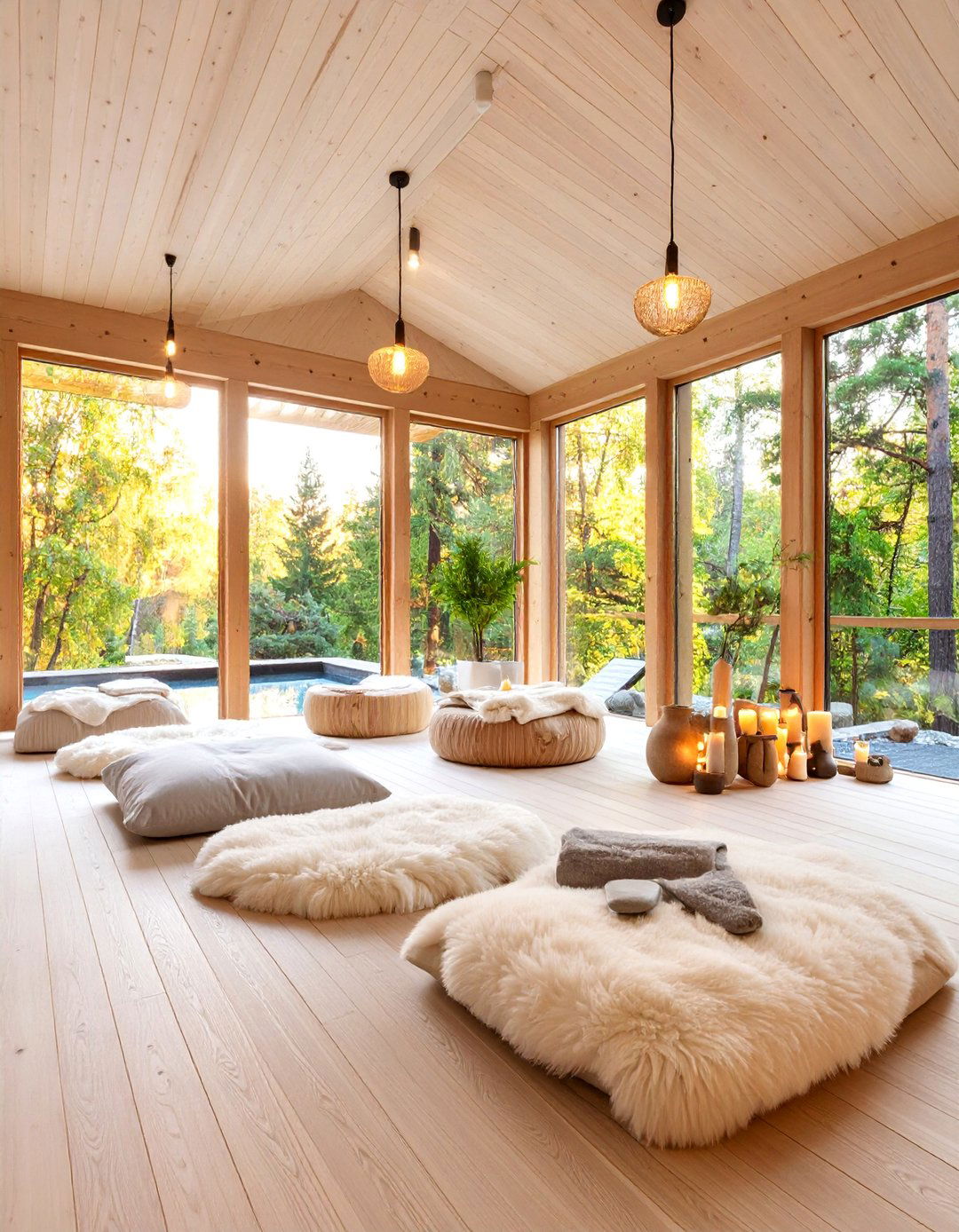
Scandinavian spa design emphasizes cozy comfort through hygge principles, featuring clean lines, natural materials, and warm atmospheric lighting throughout the space. This design includes light pine wood surfaces, white-washed walls, and simple furniture with organic curves that create visual serenity. Essential elements feature wool throw blankets, sheepskin rugs, and linen curtains in soft gray and cream tones. The lighting design incorporates numerous candles, pendant lamps with warm bulbs, and large windows that maximize natural daylight. Functional storage solutions hide clutter while maintaining the clean aesthetic, and small decorative elements like ceramic vases and wooden bowls add subtle personality. The overall atmosphere promotes lagom (balanced living) and encourages clients to slow down and appreciate simple pleasures in a comfortable, unpretentious environment.
6. Mediterranean Spa with Terra Cotta and Blue Accents
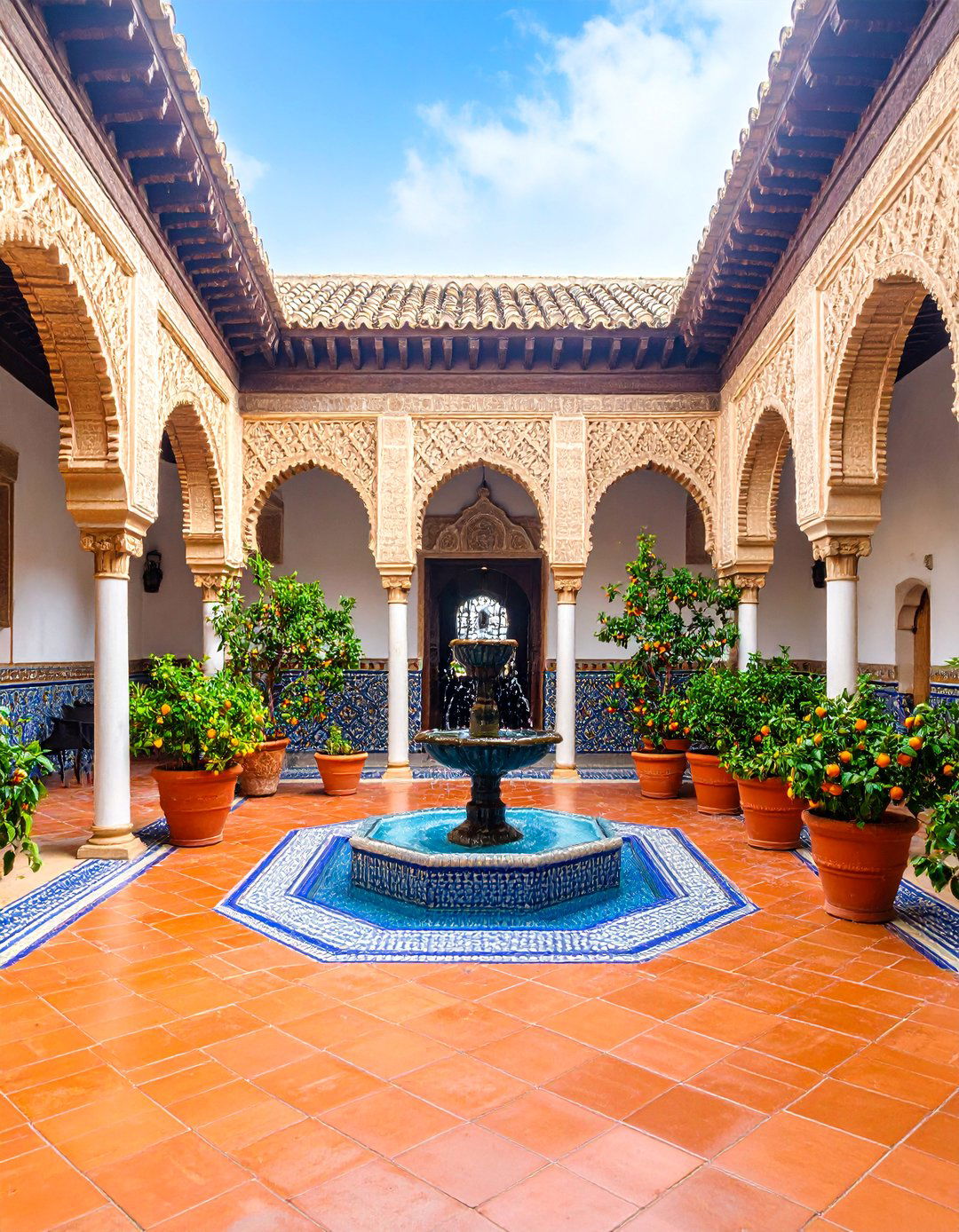
Mediterranean spa design captures coastal serenity through warm terra cotta tiles, azure blue accents, and whitewashed walls that evoke seaside tranquility. This comprehensive theme includes arched doorways, exposed wooden beams, and natural stone features that reflect traditional Mediterranean architecture. The color palette combines ocean blues, sandy beiges, olive greens, and crisp whites throughout all design elements. Furniture features wrought iron details, mosaic tile inlays, and comfortable seating with weather-resistant fabrics. Decorative elements include ceramic pottery, dried herbs in baskets, and sea glass collections that celebrate coastal living. Outdoor-inspired features like fountain elements, citrus plants, and natural ventilation create connections to seaside environments. This design promotes the Mediterranean lifestyle of relaxed elegance and healthy living through visual and sensory elements.
7. Japanese Onsen-Inspired Spa with Traditional Elements
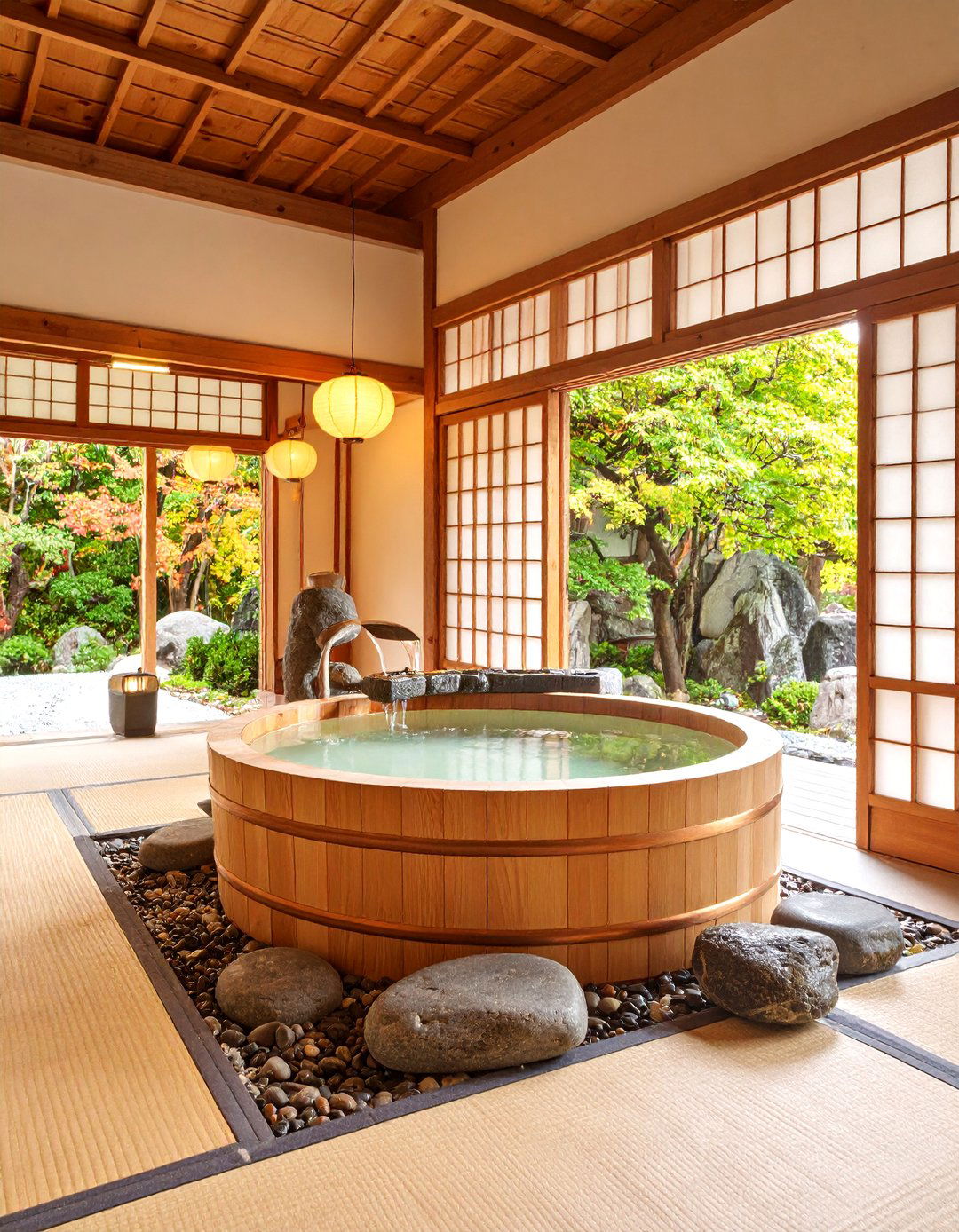
Japanese onsen-inspired spa design honors traditional bathing culture through authentic materials, thoughtful spatial arrangements, and respect for natural elements throughout the environment. This approach features cedar wood soaking tubs, tatami mat flooring, and shoji screen room dividers that create intimate spaces. The design includes stone lanterns, bamboo water fountains, and carefully raked zen gardens that promote meditation and mindfulness. Color schemes remain understated with natural wood tones, black accents, and white surfaces that emphasize purity and simplicity. Traditional elements like wooden buckets, natural loofahs, and ceramic sake cups enhance the authentic cultural experience. Lighting consists of paper lanterns and subtle LED strips that create soft, uniform illumination. This design philosophy celebrates the Japanese concept of forest bathing and spiritual cleansing through thoughtful environmental design.
8. Industrial Chic Spa with Exposed Brick Features

Industrial chic spa design transforms urban elements into sophisticated wellness environments through exposed brick walls, metal fixtures, and contemporary furniture arrangements. This design includes polished concrete floors, steel beam ceilings, and large factory-style windows that flood spaces with natural light. The color palette features charcoal grays, warm brick tones, and white accents that create modern urban sophistication. Furniture includes leather seating, metal-framed tables, and vintage industrial lighting fixtures repurposed for spa use. Softening elements like plush rugs, flowing curtains, and abundant greenery balance the hard surfaces with organic comfort. Modern amenities include state-of-the-art sound systems, automated climate controls, and sleek technology integration. This design appeals to urban professionals seeking contemporary luxury that honors architectural heritage while providing cutting-edge wellness experiences.
9. Moroccan-Inspired Spa with Rich Jewel Tones
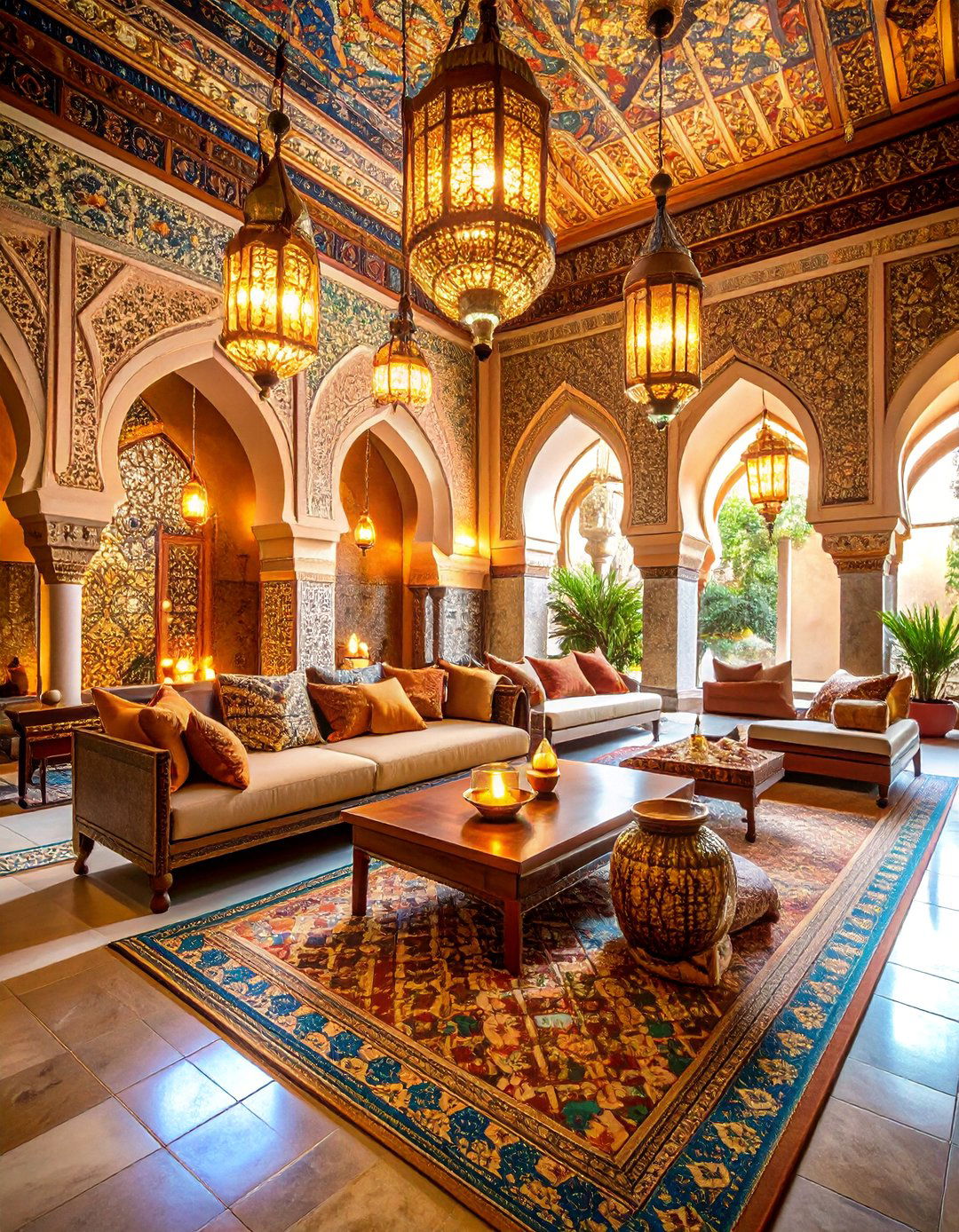
Moroccan-inspired spa design creates exotic luxury through intricate tile patterns, rich jewel tones, and ornate metalwork that transport clients to North African palaces. This comprehensive approach features hand-painted zellige tiles, carved wooden screens, and brass fixtures that reflect traditional craftsmanship. The color scheme includes deep emeralds, royal purples, golden yellows, and ruby reds throughout textiles and decorative elements. Seating areas feature low banquettes with embroidered cushions, ornate coffee tables, and hanging lanterns that create intimate conversation spaces. Architectural elements include horseshoe arches, decorative plasterwork, and mosaic fountains that provide visual and auditory interest. Aromatherapy incorporates traditional scents like rose, orange blossom, and mint through copper diffusers and incense burners. This design celebrates the Moroccan tradition of communal bathing and hospitality through sensory-rich environments.
10. Rustic Mountain Spa with Stone and Wood Elements
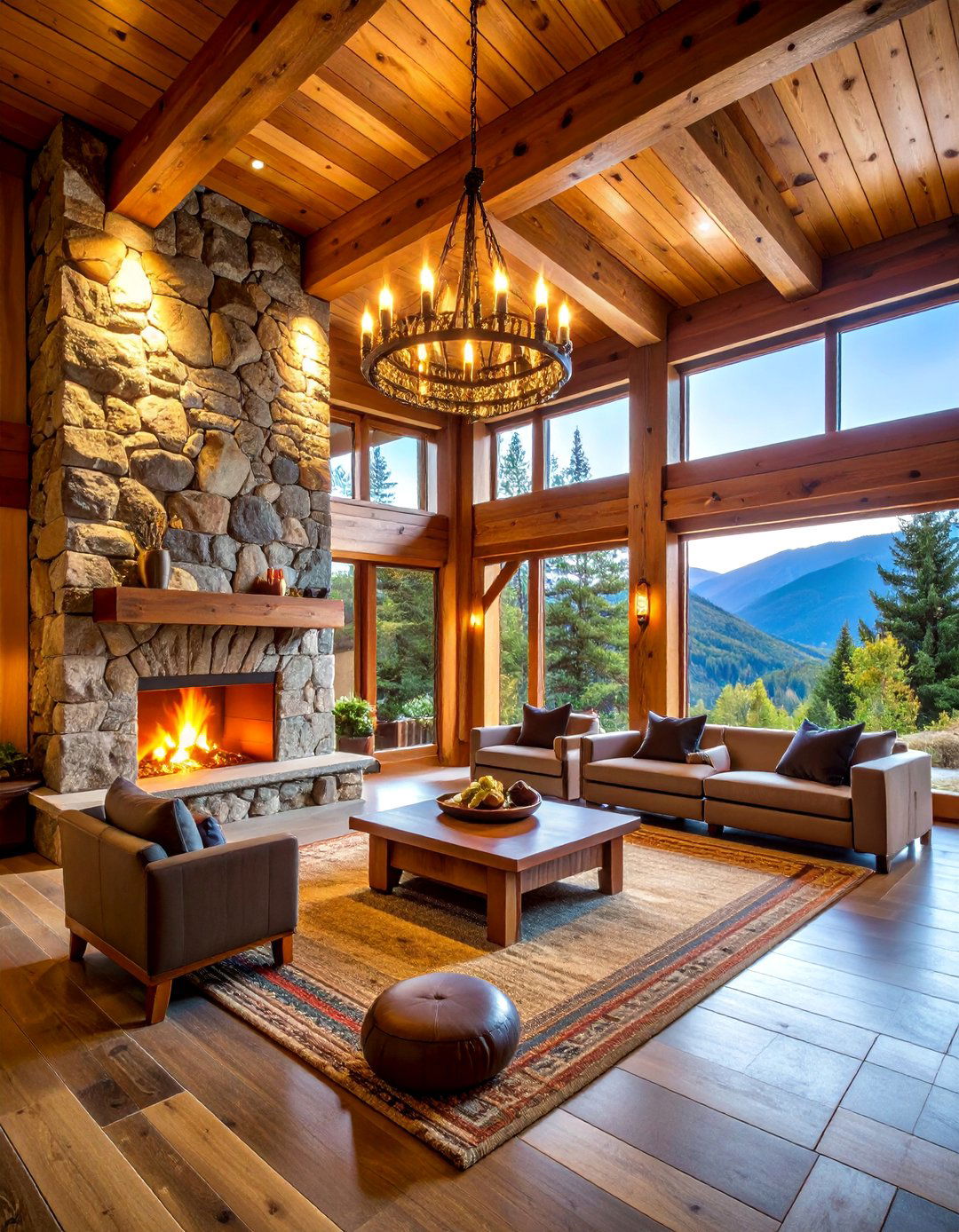
Rustic mountain spa design embraces natural lodge aesthetics through massive stone fireplaces, reclaimed wood beams, and organic textures that celebrate wilderness beauty. This design features flagstone floors, log furniture, and Native American-inspired textiles that honor regional cultural heritage. The color palette includes forest greens, earth browns, sunset oranges, and sky blues that reflect mountain landscapes. Architectural elements feature exposed timber construction, stone accent walls, and large windows framing scenic mountain views. Comfort elements include fur throws, leather seating, and wool blankets that provide cozy warmth. Natural lighting maximizes daylight while stone-surrounded fireplaces provide evening ambiance. Decorative elements include antler chandeliers, wildlife photography, and handcrafted pottery that celebrate local artisans. This design promotes connection with nature and appreciation for craftsmanship through authentic regional materials.
11. Art Deco Glamour Spa with Gold and Black Accents
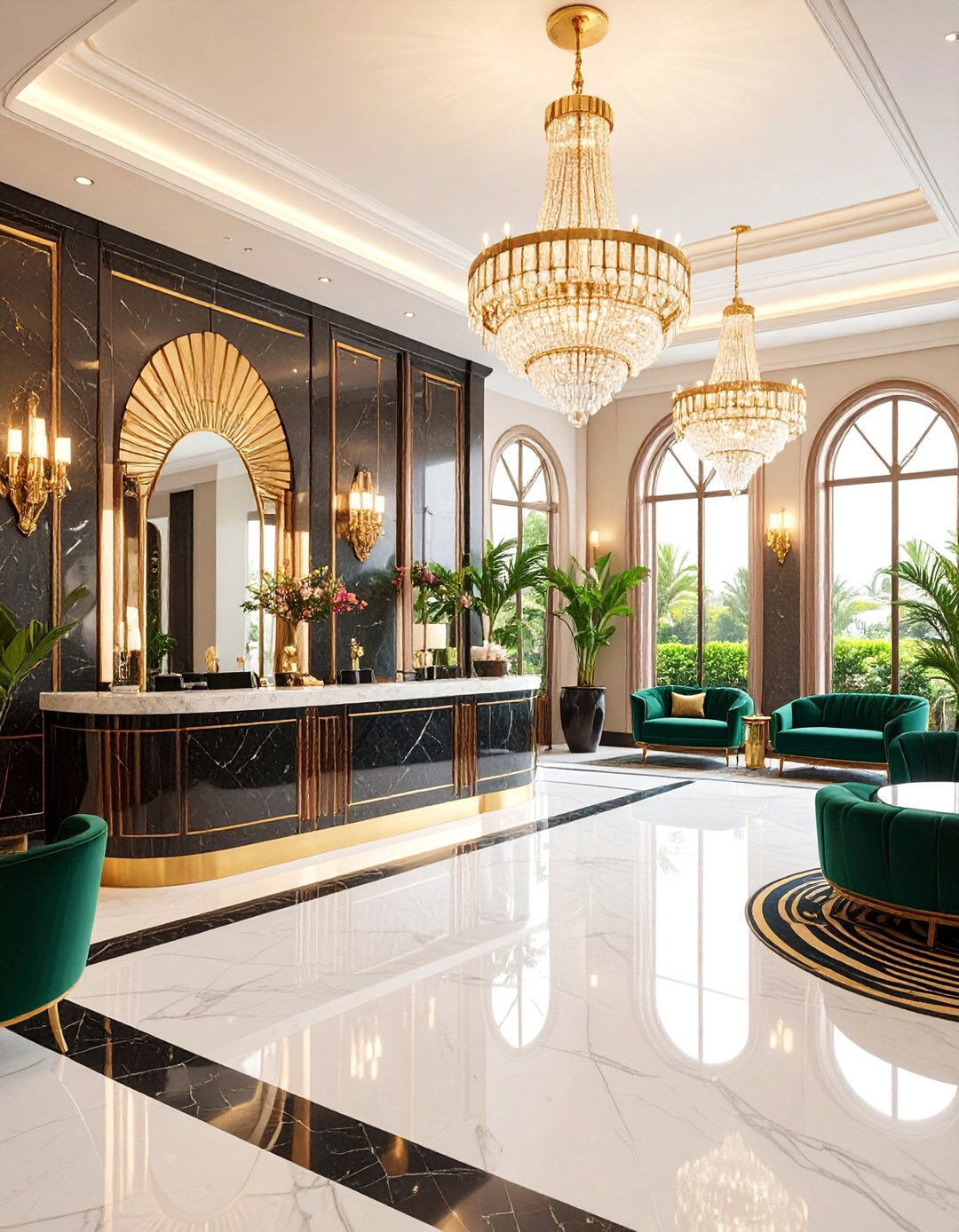
Art Deco glamour spa design revives 1920s sophistication through geometric patterns, metallic finishes, and luxurious materials that create timeless elegance throughout the space. This approach features black marble surfaces, gold leaf details, and crystal chandeliers that reflect the era's opulent aesthetic. The design includes curved reception desks, sunburst mirrors, and zigzag patterns in floor tiles and wall coverings. Color schemes emphasize dramatic black and white contrasts with gold accents and jewel-tone upholstery in emerald and sapphire. Furniture features velvet seating, mirrored surfaces, and lacquered finishes that enhance the glamorous atmosphere. Lighting incorporates period-appropriate fixtures with frosted glass shades and brass fittings. This design celebrates the Jazz Age's optimism and luxury while providing modern spa amenities that meet contemporary wellness needs through sophisticated environmental design.
12. Coastal Spa Sanctuary with Driftwood and Sea Glass
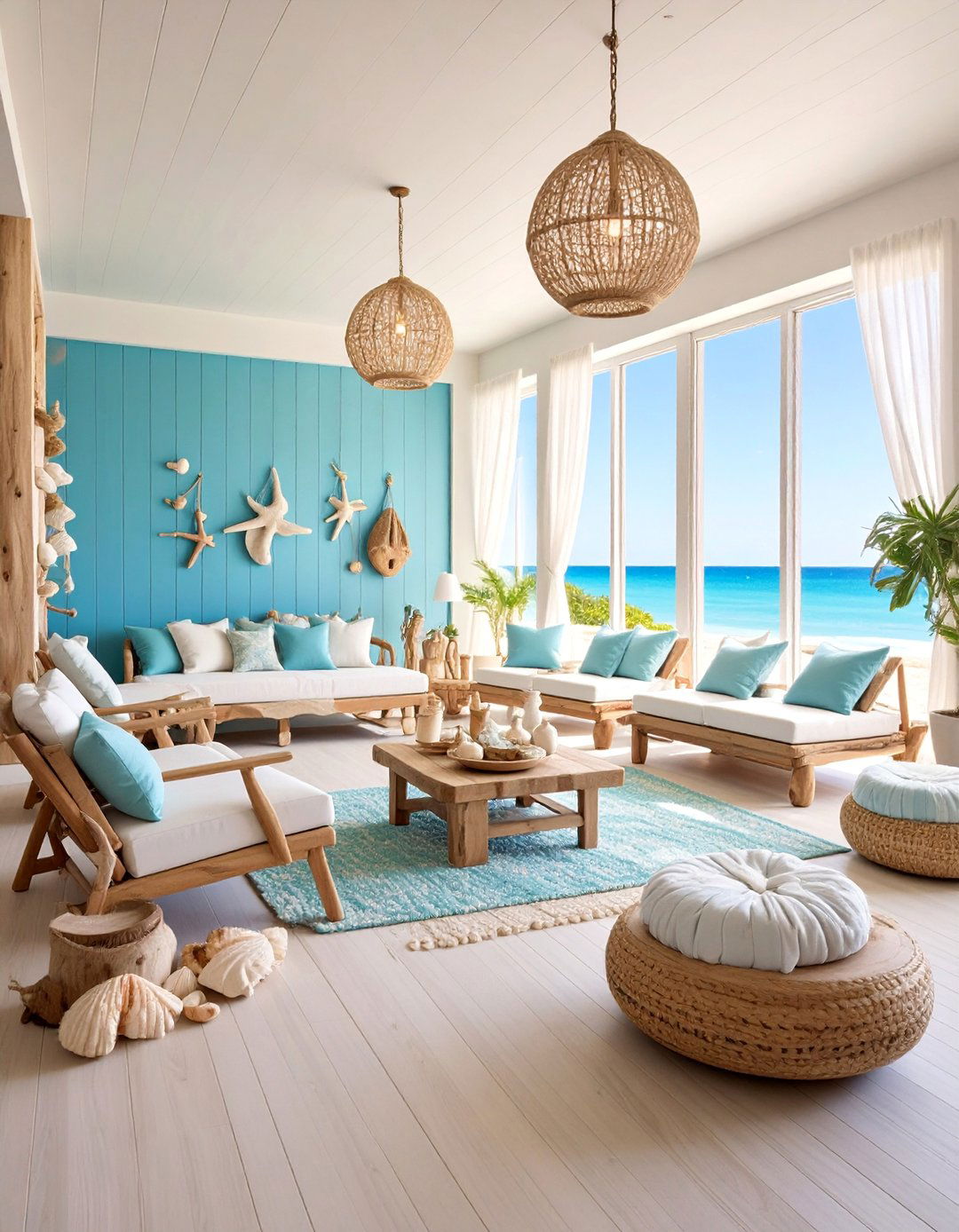
Coastal spa design captures beachside tranquility through weathered driftwood furniture, sea glass decorative elements, and ocean-inspired color palettes that evoke seaside relaxation. This comprehensive theme features whitewashed wood paneling, rope details, and nautical hardware that celebrate maritime heritage. The color scheme includes sandy beiges, ocean blues, seafoam greens, and coral pinks throughout all surfaces and textiles. Natural elements include shells, starfish, and sea stones arranged in glass vessels and shadow boxes. Furniture features slipcovered seating, reclaimed wood tables, and wicker storage baskets that enhance the casual beach house atmosphere. Lighting incorporates lantern-style fixtures, rope-wrapped pendants, and large windows that maximize ocean views. Water features include shell fountains and aquariums that provide soothing marine sounds and visual interest while celebrating coastal ecosystems.
13. Contemporary Minimalist Spa with Monochromatic Design

Contemporary minimalist spa design emphasizes architectural purity through monochromatic color schemes, geometric forms, and carefully edited decorative elements that create sophisticated simplicity. This approach features polished concrete floors, white walls, and black accent pieces that establish dramatic visual contrast. The design includes floating vanities, wall-mounted fixtures, and hidden storage systems that maintain clean lines throughout all spaces. Furniture consists of sculptural seating, glass surfaces, and metal frameworks that emphasize form over ornamentation. Lighting design incorporates linear LED systems, recessed fixtures, and natural daylight through strategically placed skylights. Technology integration includes automated systems for climate, lighting, and audio that respond to user preferences. This design philosophy celebrates the beauty of essential elements while providing luxury amenities that support contemporary wellness practices through environmental restraint and technological sophistication.
14. Tropical Paradise Spa with Thatched Roof Elements
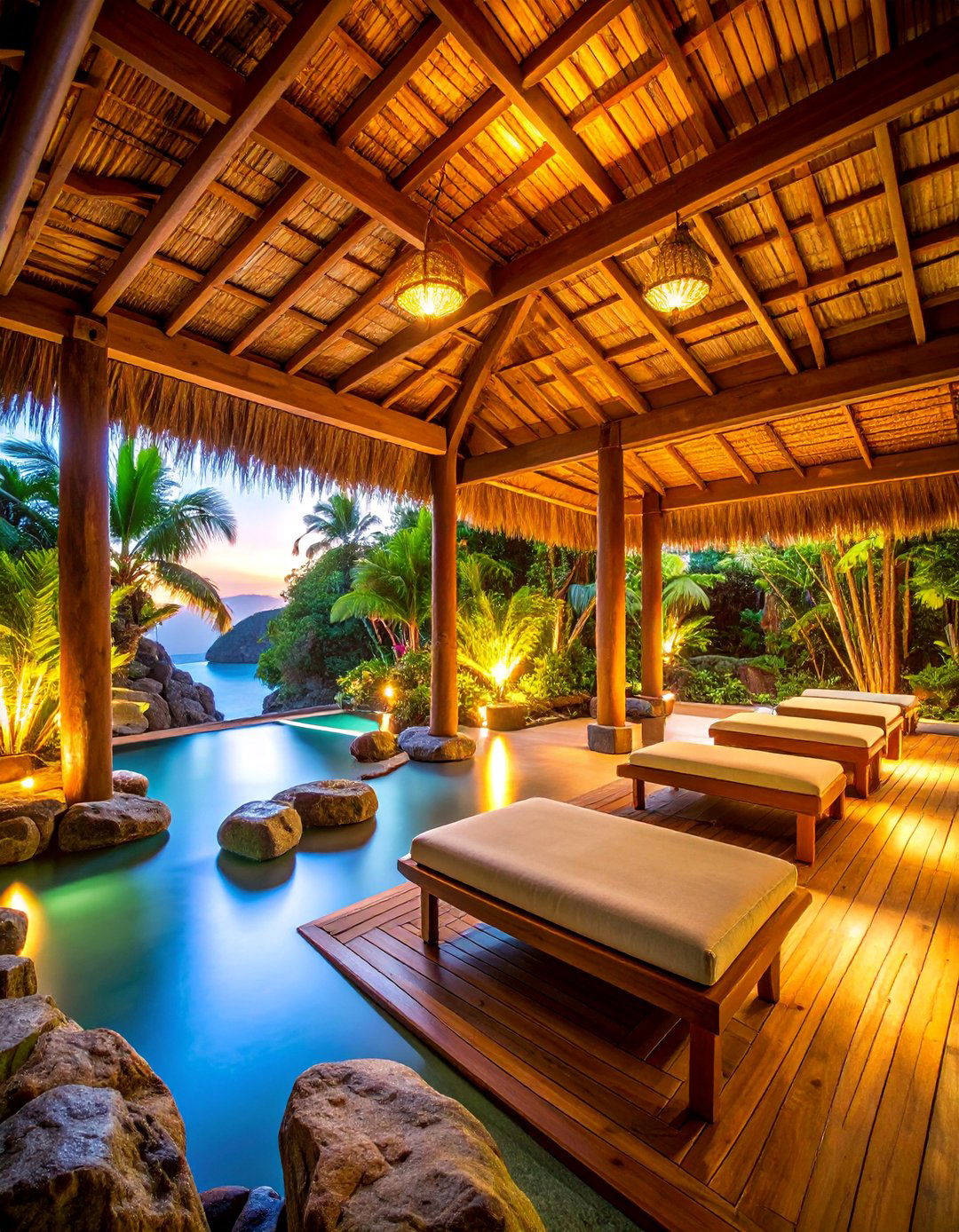
Tropical paradise spa design creates island resort atmospheres through thatched roofing, bamboo structures, and lush vegetation that transport clients to exotic destinations. This comprehensive approach features natural palm frond coverings, bamboo wall panels, and teak wood furniture that honor traditional island architecture. The color palette includes vibrant greens, sunny yellows, tropical blues, and sunset oranges throughout fabrics and decorative elements. Living elements include tropical plants like birds of paradise, orchids, and palm trees arranged throughout treatment areas. Water features include lagoon-style pools, cascading waterfalls, and natural rock formations that create immersive tropical environments. Outdoor elements blend seamlessly with indoor spaces through large openings, natural ventilation, and organic material continuity. This design celebrates island culture while providing luxury amenities that enhance the tropical getaway experience through authentic environmental design.
15. Gothic Revival Spa with Dark Romantic Elements

Gothic revival spa design creates mysterious elegance through dark color palettes, ornate architectural details, and romantic lighting that establishes sophisticated drama throughout the environment. This approach features stone archways, stained glass windows, and wrought iron fixtures that honor medieval architectural traditions. The color scheme includes deep purples, midnight blacks, burgundy reds, and silver accents that create rich atmospheric depth. Furniture features velvet upholstery, carved wooden details, and antique brass hardware that enhances the historical aesthetic. Lighting incorporates candelabras, lanterns, and colored glass fixtures that cast dramatic shadows and warm pools of light. Decorative elements include tapestries, ornate mirrors, and fresh flowers in silver vessels that soften the dramatic architecture. This design appeals to clients seeking unique wellness experiences that combine historical grandeur with modern comfort and luxury spa amenities.
16. Mid-Century Modern Spa with Retro Furniture

Mid-century modern spa design celebrates 1950s optimism through clean lines, bold colors, and iconic furniture pieces that create stylish sophistication throughout the wellness environment. This approach features terrazzo floors, wood paneling, and geometric patterns that reflect the era's design innovation. The color palette includes orange, turquoise, yellow, and brown in carefully balanced proportions throughout seating and decorative elements. Furniture includes Eames chairs, Nelson benches, and kidney-shaped tables that showcase period design excellence. Architectural elements feature floor-to-ceiling windows, open floor plans, and built-in storage systems that emphasize functionality. Lighting incorporates pendant fixtures, table lamps, and wall sconces with period-appropriate materials and forms. This design celebrates post-war innovation while providing contemporary spa amenities that meet modern wellness needs through historically informed environmental design.
17. Wellness Technology Spa with Smart Home Integration
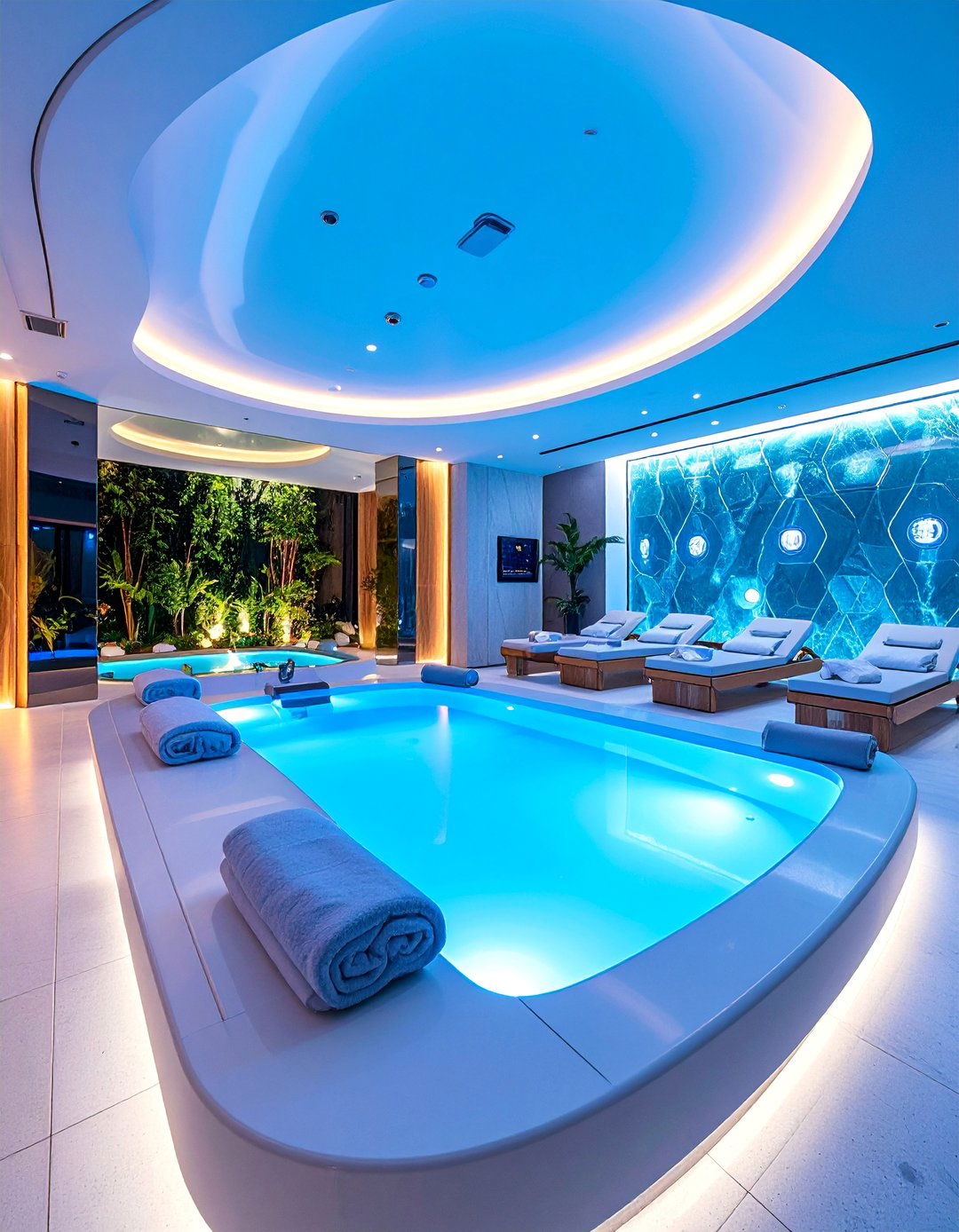
Wellness technology spa design integrates cutting-edge automation, biometric monitoring, and digital personalization to create scientifically optimized environments that adapt to individual client needs. This comprehensive approach features programmable lighting systems, automated climate controls, and sound therapy equipment that respond to biometric feedback. The design includes charging stations, digital displays, and wireless connectivity throughout all treatment areas. Smart furniture features built-in sensors, adjustable components, and memory settings that customize experiences for each client. Color-changing LED systems create dynamic environments that support circadian rhythms and mood enhancement. Air purification systems, water filtration technology, and aromatherapy diffusers operate automatically to maintain optimal environmental conditions. This design represents the future of wellness environments through seamless technology integration that enhances rather than distracts from human relaxation and healing processes.
18. Vintage European Spa with Antique Furnishings

Vintage European spa design recreates Old World elegance through antique furnishings, classical architectural details, and refined decorative elements that honor traditional spa heritage. This approach features marble columns, crystal chandeliers, and ornate moldings that reflect European palace aesthetics. The color palette includes cream, gold, sage green, and dusty rose throughout upholstery and wall treatments. Furniture includes period seating, carved wooden tables, and antique armoires that provide authentic historical character. Decorative elements feature oil paintings, porcelain collections, and fresh flower arrangements in crystal vases. Architectural details include coffered ceilings, parquet floors, and tall windows with elegant drapery. This design celebrates the European spa tradition of thermal baths and healing waters while providing modern amenities that meet contemporary wellness standards through historically informed environmental design that honors centuries of spa culture.
19. Desert Oasis Spa with Southwestern Elements
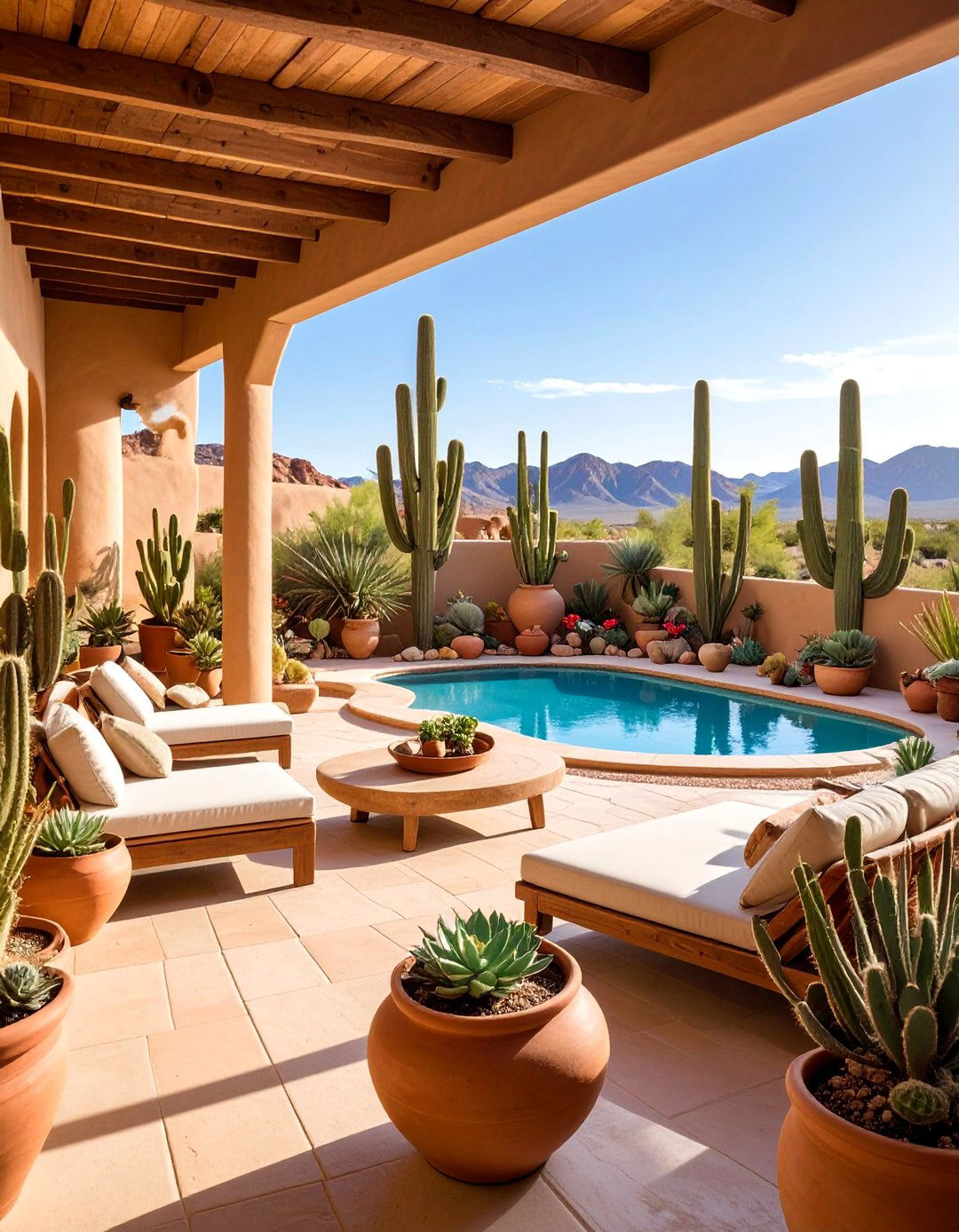
Desert oasis spa design captures Southwestern tranquility through adobe walls, terra cotta tiles, and desert plant collections that celebrate arid landscape beauty. This comprehensive approach features natural stone surfaces, wooden beam ceilings, and handcrafted tile work that honor regional building traditions. The color palette includes sunset oranges, sage greens, canyon reds, and sky blues throughout textiles and decorative elements. Furniture features leather seating, rustic wood tables, and wrought iron details that enhance the southwestern aesthetic. Living elements include cacti, succulents, and desert flowers arranged in ceramic pottery and natural stone planters. Water features include fountain elements and reflection pools that provide cooling relief and sound therapy. This design celebrates Native American and Hispanic cultural influences while providing luxury amenities that enhance the desert retreat experience through authentic regional materials and craftsmanship.
20. Sustainable Eco Spa with Recycled Materials

Sustainable eco spa design prioritizes environmental responsibility through recycled materials, renewable energy systems, and organic products that minimize ecological impact while maximizing wellness benefits. This approach features reclaimed wood surfaces, recycled glass tiles, and bamboo flooring that demonstrate environmental stewardship. The design includes solar lighting systems, rainwater collection features, and natural ventilation that reduce energy consumption. Furniture consists of sustainably sourced pieces, organic cotton textiles, and non-toxic finishes that support human and environmental health. Living walls provide air purification while herb gardens supply fresh aromatherapy ingredients. Color palettes emphasize earth tones and natural dyes that avoid synthetic chemicals. Waste reduction systems include composting facilities and refillable amenity dispensers. This design demonstrates that luxury and environmental responsibility can coexist through innovative materials and systems that support both personal wellness and planetary health.
21. Urban Rooftop Spa with City Skyline Views
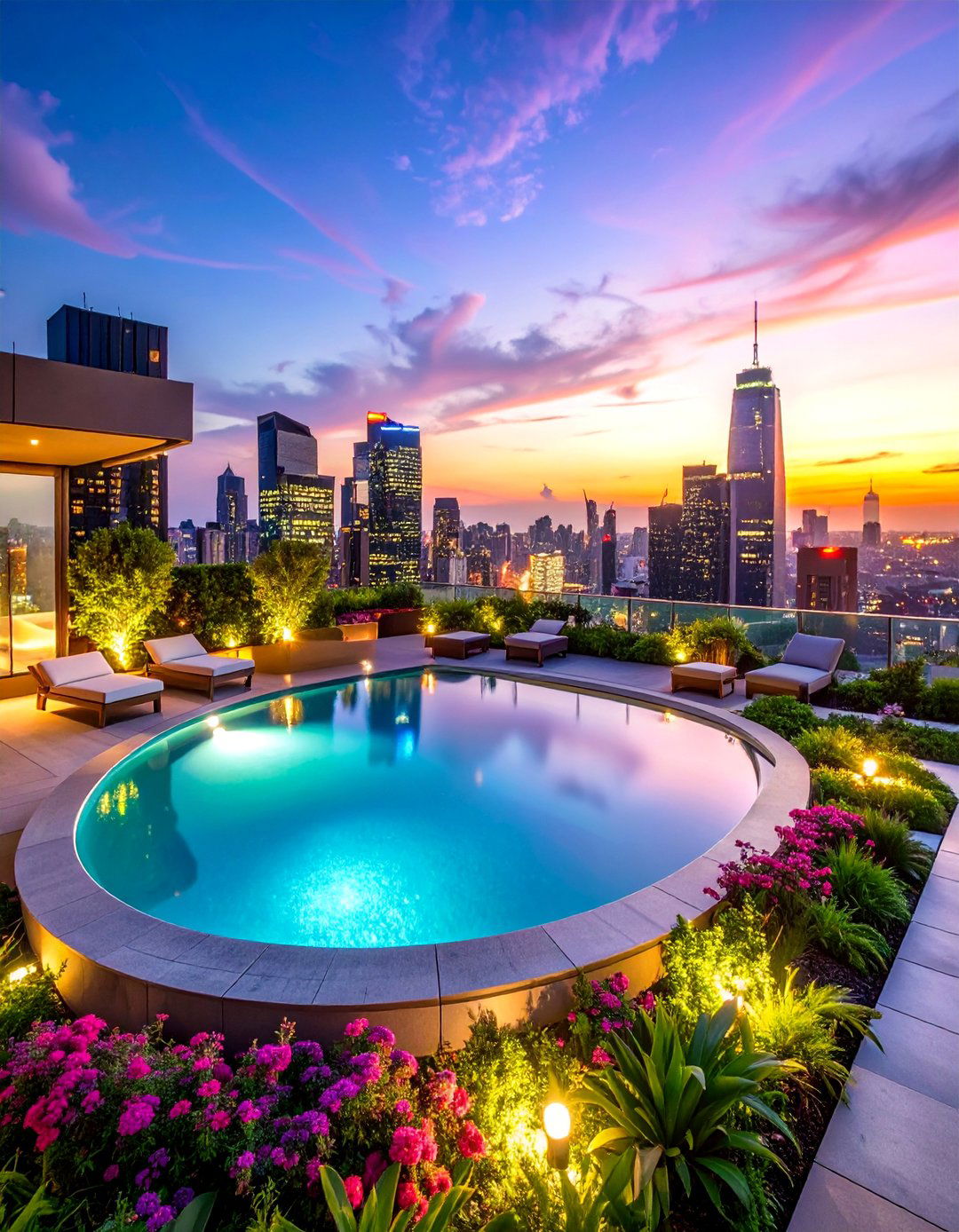
Urban rooftop spa design maximizes metropolitan locations through panoramic city views, weather-resistant materials, and vertical garden systems that create sky-high wellness sanctuaries. This comprehensive approach features outdoor treatment pavilions, infinity pools, and wind-resistant plantings that withstand urban conditions. The design includes retractable glass walls, heated floors, and climate-controlled environments that enable year-round operation. Furniture features weather-resistant cushions, powder-coated metal frames, and marine-grade fabrics that maintain luxury comfort in outdoor conditions. Lighting incorporates LED systems, landscape illumination, and city light integration that creates dramatic evening ambiance. Privacy screens include living walls, architectural panels, and strategic plantings that block urban noise while framing skyline vistas. This design appeals to urban professionals seeking luxury wellness experiences that embrace rather than escape metropolitan energy through elevated environmental design.
22. Crystal Healing Spa with Gemstone Elements

Crystal healing spa design integrates gemstone therapy, mineral displays, and metaphysical elements to create spiritually charged environments that support energy healing and chakra balancing. This approach features amethyst walls, quartz installations, and crystal-infused water features that enhance the therapeutic atmosphere. The design includes meditation spaces with singing bowls, salt lamps that provide negative ion therapy, and gemstone pathways that encourage barefoot walking. Color schemes follow chakra principles with violet, indigo, blue, green, yellow, orange, and red zones throughout different treatment areas. Furniture includes geode tables, crystal-topped surfaces, and natural stone seating that maintain energetic harmony. Lighting incorporates full-spectrum bulbs, color therapy systems, and natural daylight that support circadian rhythms. This design appeals to clients seeking alternative wellness approaches that combine traditional spa amenities with holistic healing practices through intentional crystal placement and energy-conscious environmental design.
23. Monastic Retreat Spa with Sacred Geometry
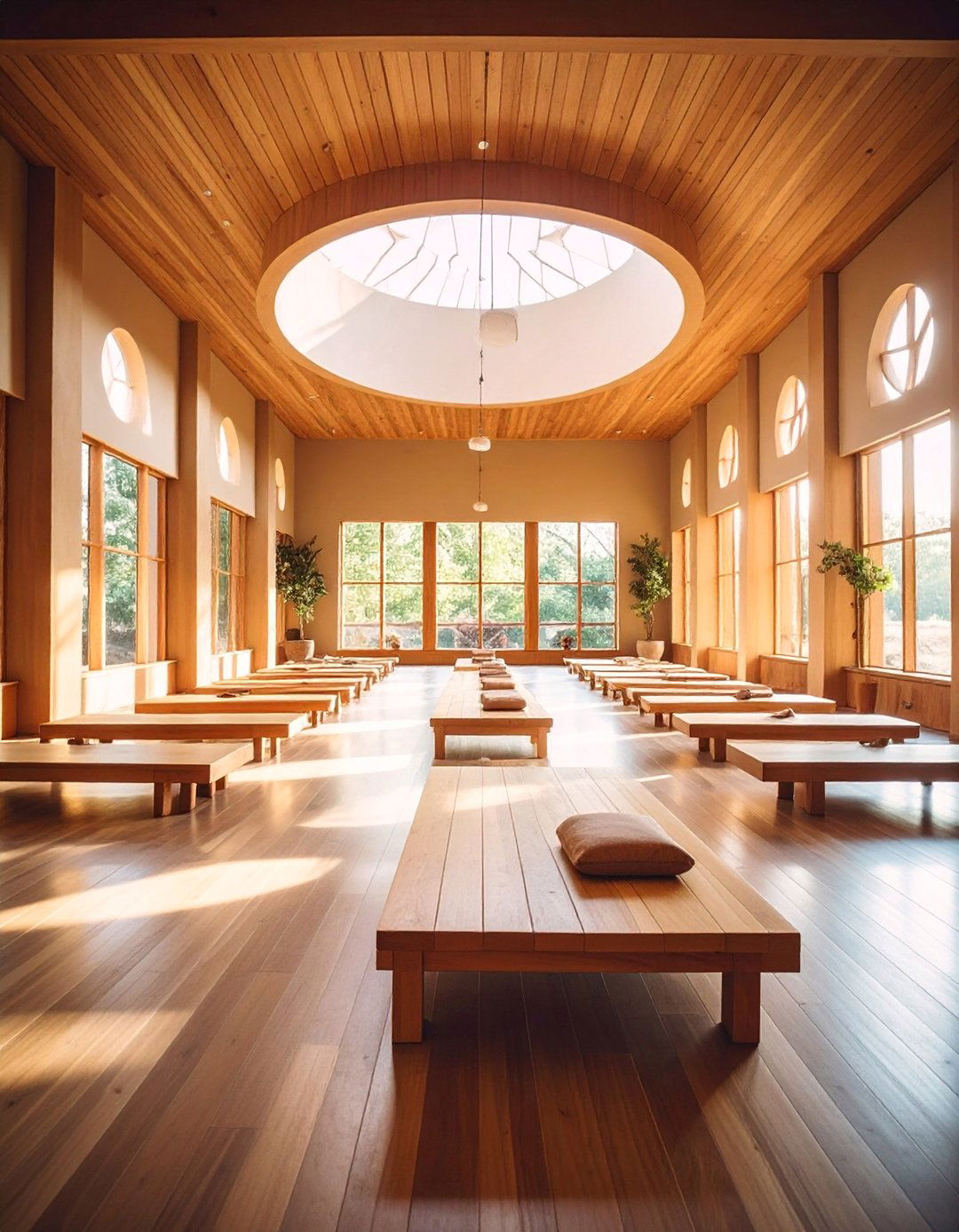
Monastic retreat spa design creates contemplative environments through sacred geometry principles, minimal furnishings, and spiritual symbolism that encourage deep introspection and healing. This approach features golden ratio proportions, mandala patterns, and labyrinth pathways that support meditative practices. The design includes prayer wheels, meditation bells, and sacred symbols from various spiritual traditions. Color palettes emphasize pure whites, natural woods, and muted earth tones that promote spiritual clarity. Furniture consists of simple benches, floor cushions, and meditation supports that encourage contemplative postures. Architectural elements include arched passages, circular windows, and hexagonal rooms that reflect sacred mathematical principles. Natural lighting emphasizes sunrise and sunset orientations while candle illumination provides evening meditation support. This design serves clients seeking spiritual renewal and inner peace through environmentally supported contemplative practices that honor diverse wisdom traditions.
24. Aromatherapy Garden Spa with Herb Collections

Aromatherapy garden spa design celebrates scent therapy through extensive herb gardens, essential oil production, and botanical displays that create immersive sensory experiences throughout the wellness environment. This comprehensive approach features lavender fields, herb spirals, and greenhouse spaces that provide fresh ingredients for treatments. The design includes distillation equipment, drying rooms, and apothecary displays that demonstrate aromatherapy preparation. Living elements encompass medicinal plants, flowering herbs, and scented gardens arranged for optimal fragrance distribution. Educational components include plant identification labels, harvest calendars, and botanical libraries that inform clients about herbal benefits. Workshop spaces provide hands-on learning opportunities for essential oil blending and herbal preparation. Water features include herb-infused pools and aromatic steam rooms that enhance therapeutic benefits. This design appeals to clients interested in natural healing approaches that combine traditional spa treatments with botanical education and hands-on aromatherapy experiences.
25. Futuristic Wellness Spa with Holographic Elements
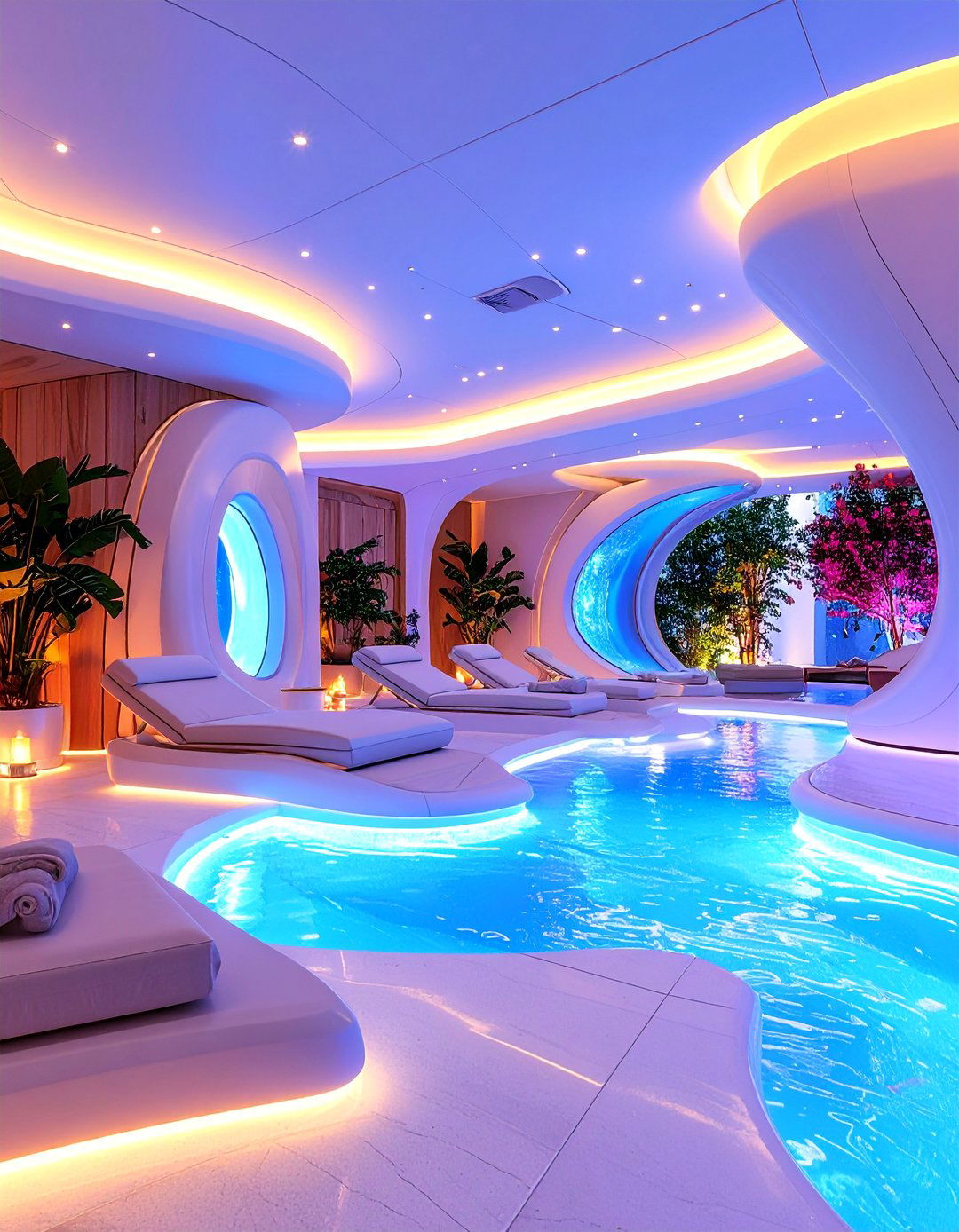
Futuristic wellness spa design embraces tomorrow's technology through holographic displays, virtual reality systems, and AI-powered personalization that create cutting-edge wellness experiences. This approach features interactive walls, projection mapping, and augmented reality systems that transform traditional spa environments. The design includes biometric monitoring stations, automated treatment protocols, and predictive health analytics that customize services for optimal results. Furniture consists of shape-shifting seating, temperature-controlled surfaces, and gravity-neutral relaxation pods that enhance comfort through advanced engineering. Lighting incorporates circadian simulation, mood-responsive systems, and therapeutic wavelengths that support healing processes. Treatment technologies include sonic therapy, electromagnetic field therapy, and nano-particle delivery systems that represent wellness innovation. This design appeals to early adopters seeking next-generation wellness experiences that combine traditional relaxation benefits with scientific advancement through revolutionary technology integration that previews the future of human health optimization.
Conclusion:
Modern spa decor successfully combines aesthetic beauty with functional wellness through thoughtful design integration that supports healing and relaxation. Whether embracing minimalist zen principles, biophilic natural elements, or cutting-edge technology solutions, effective spa environments create immersive experiences that engage all senses. The key to successful spa design lies in developing complete thematic concepts rather than focusing on isolated decorative elements, ensuring every component works harmoniously to support the wellness journey and create lasting memories for every client.



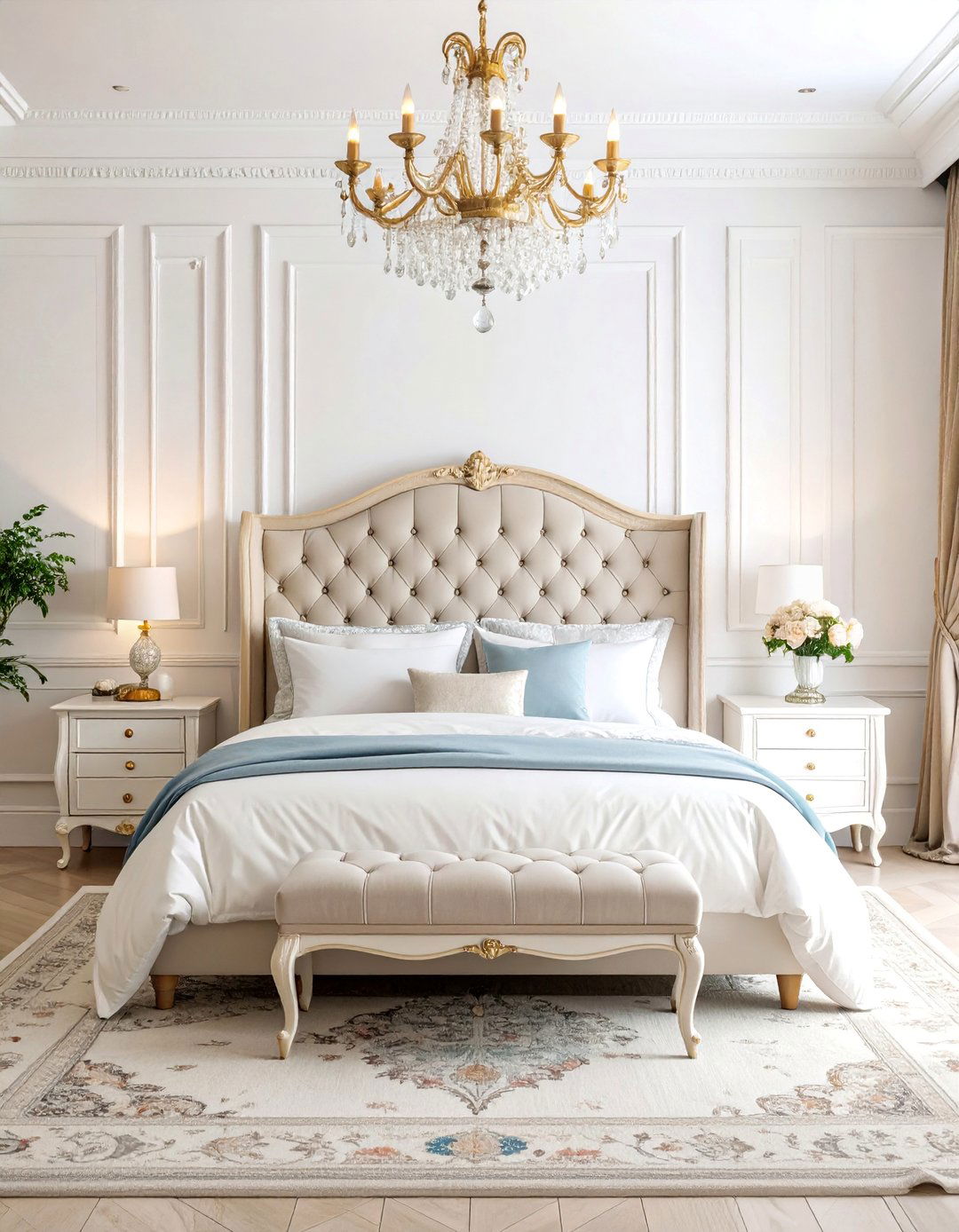
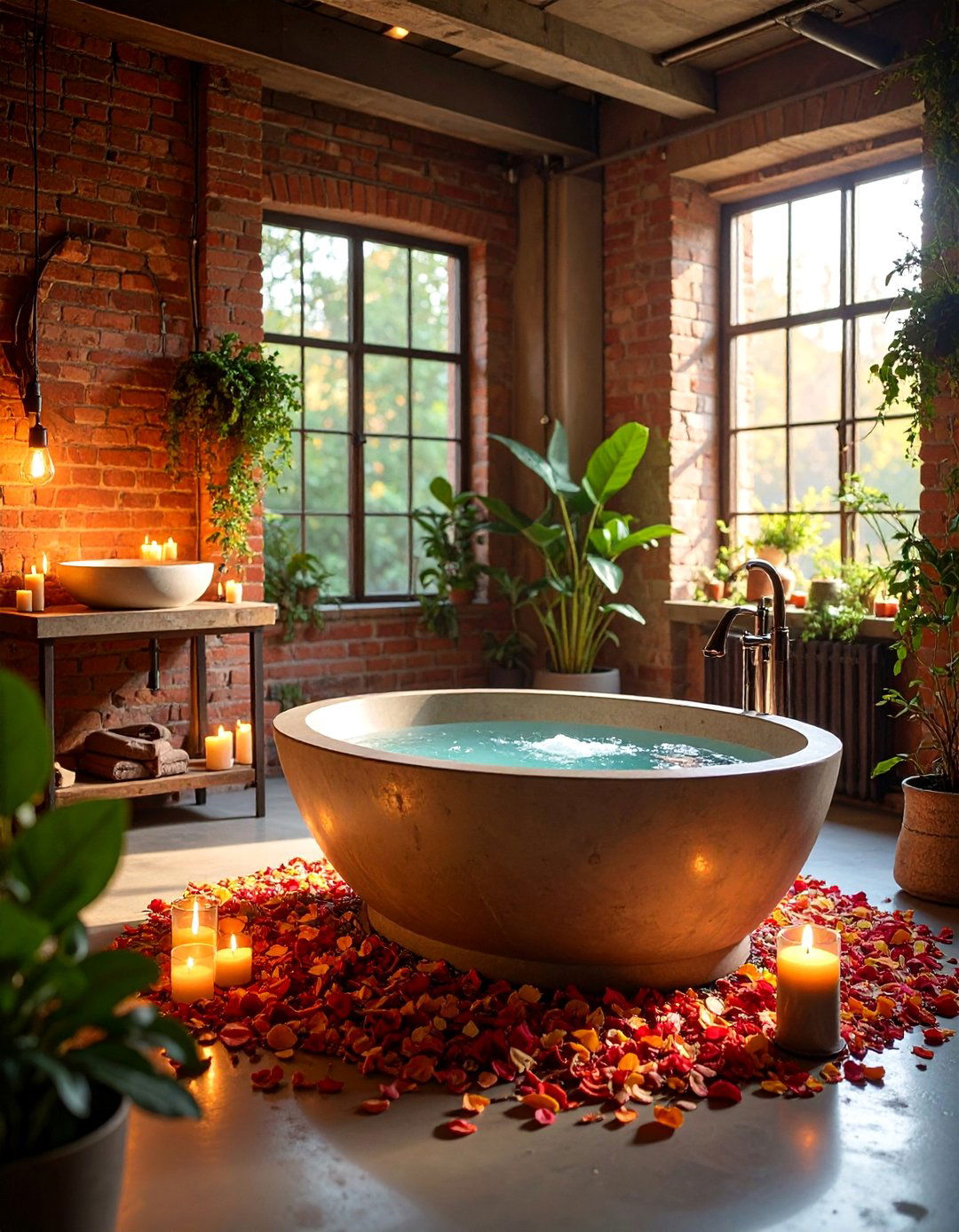

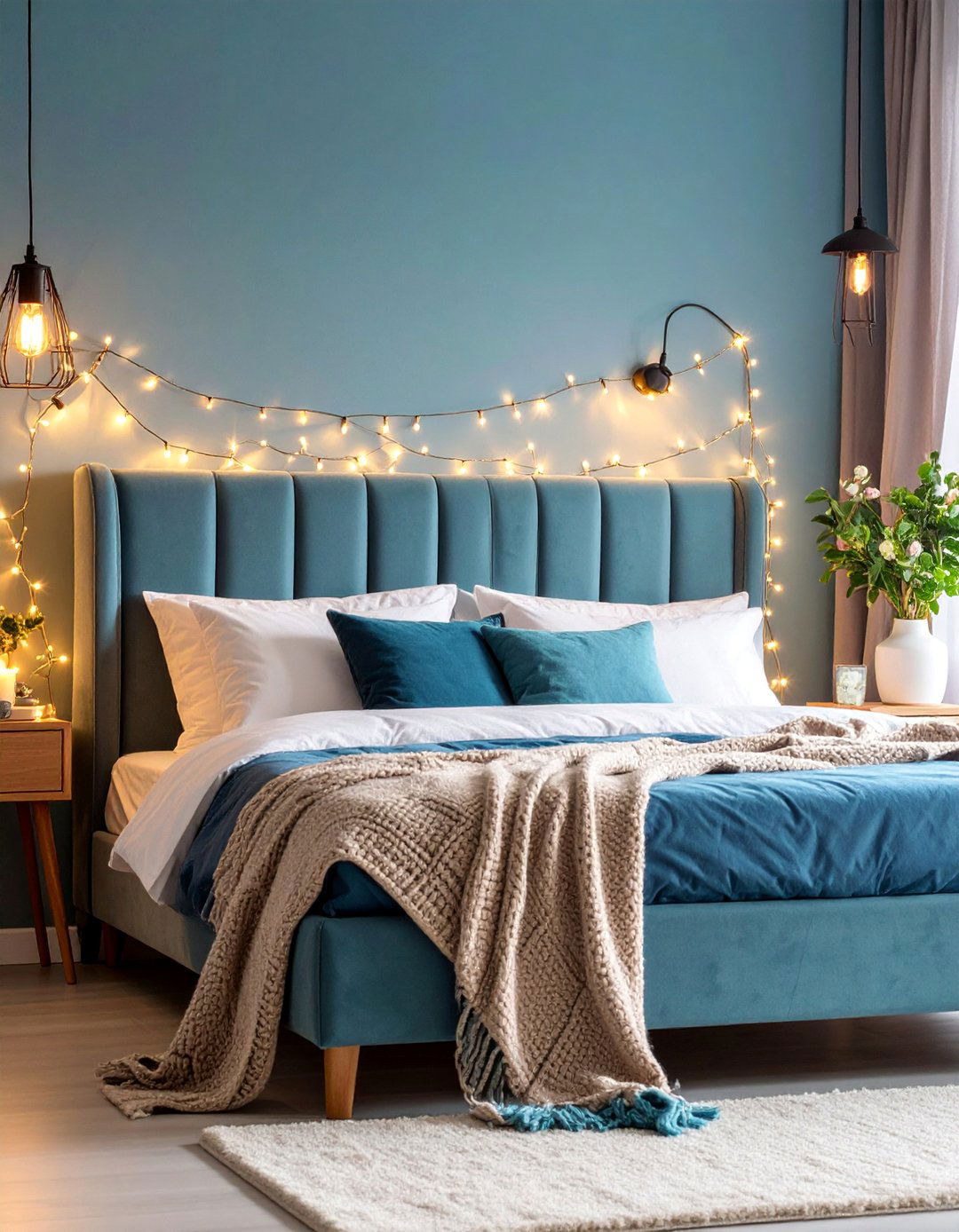
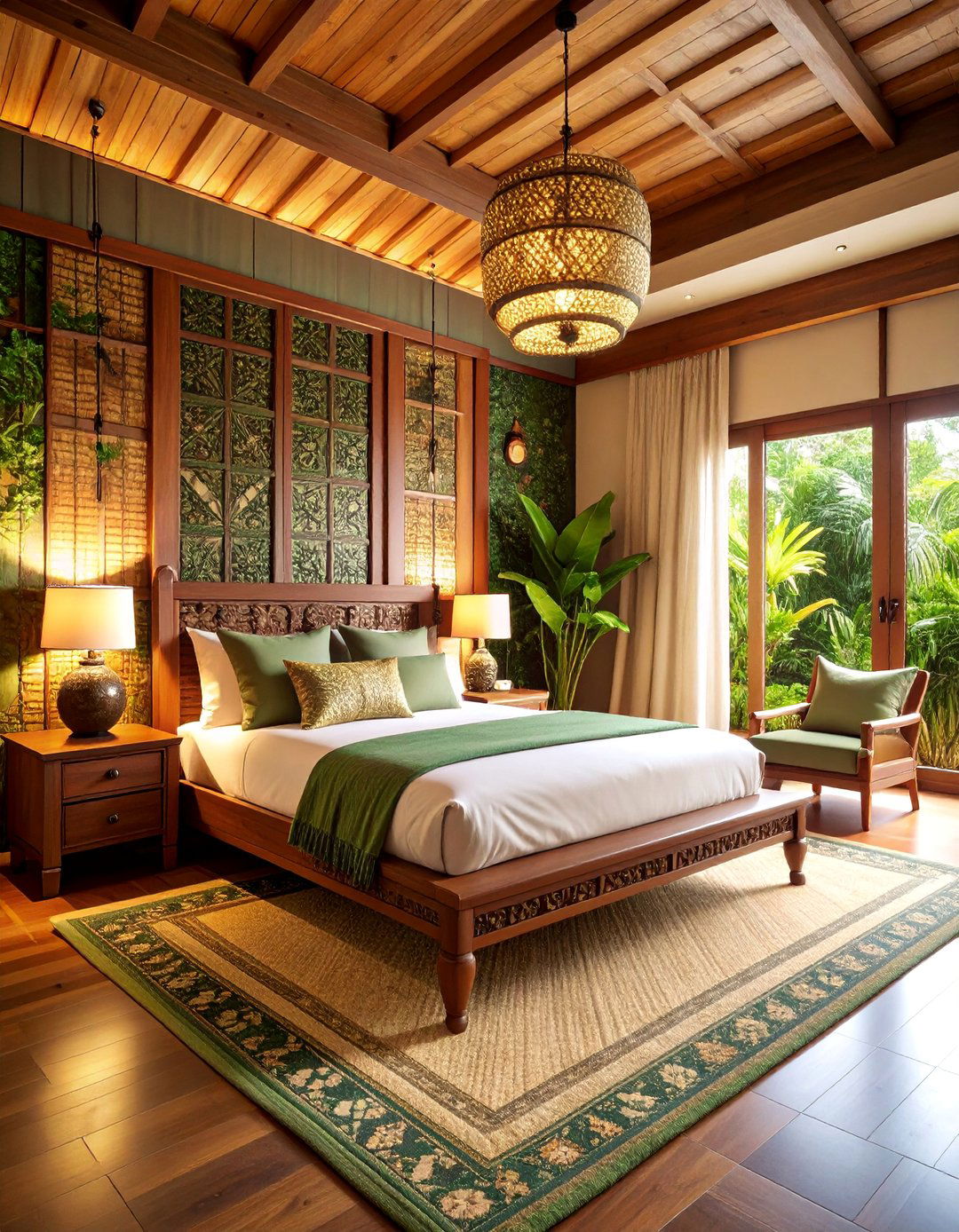
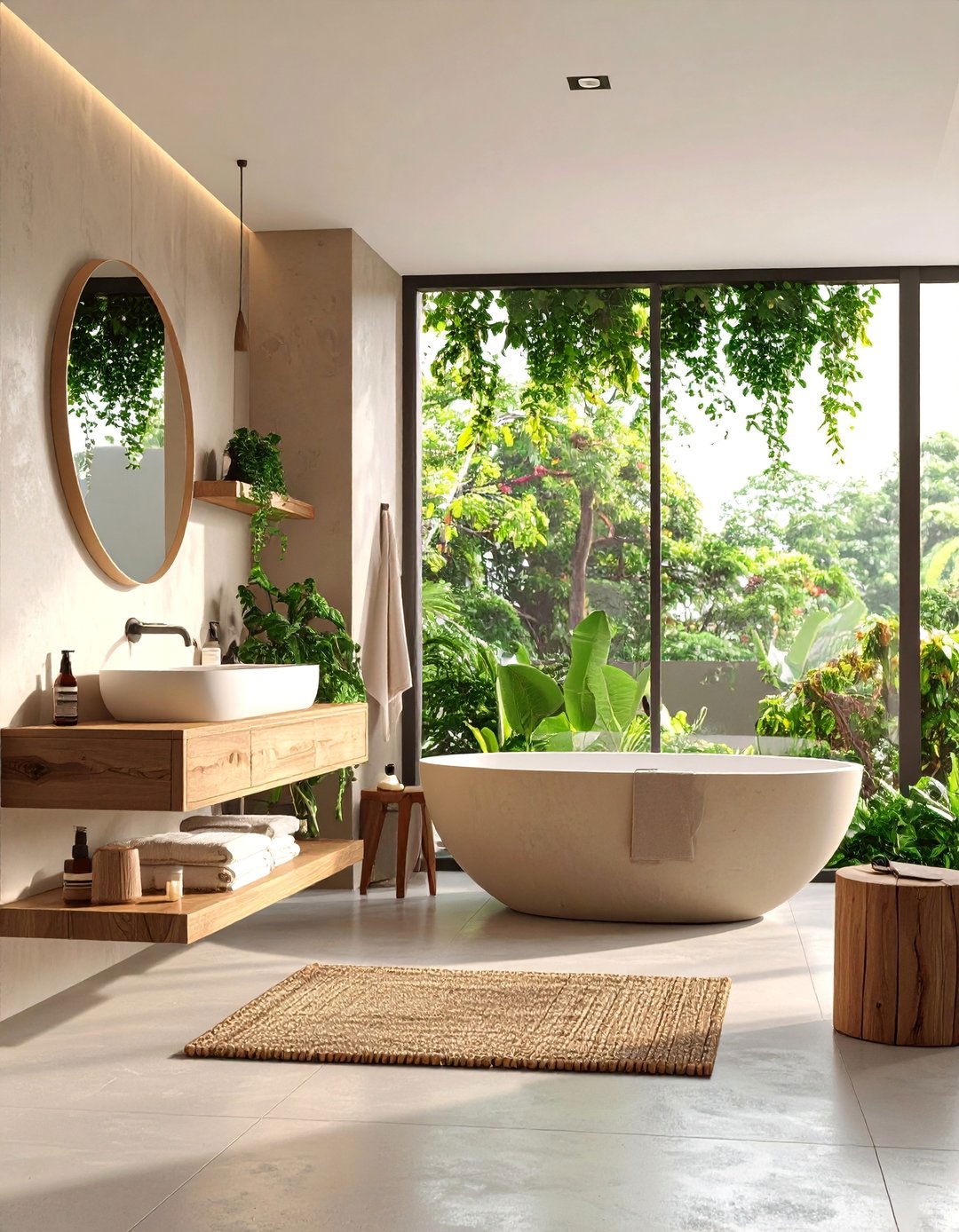
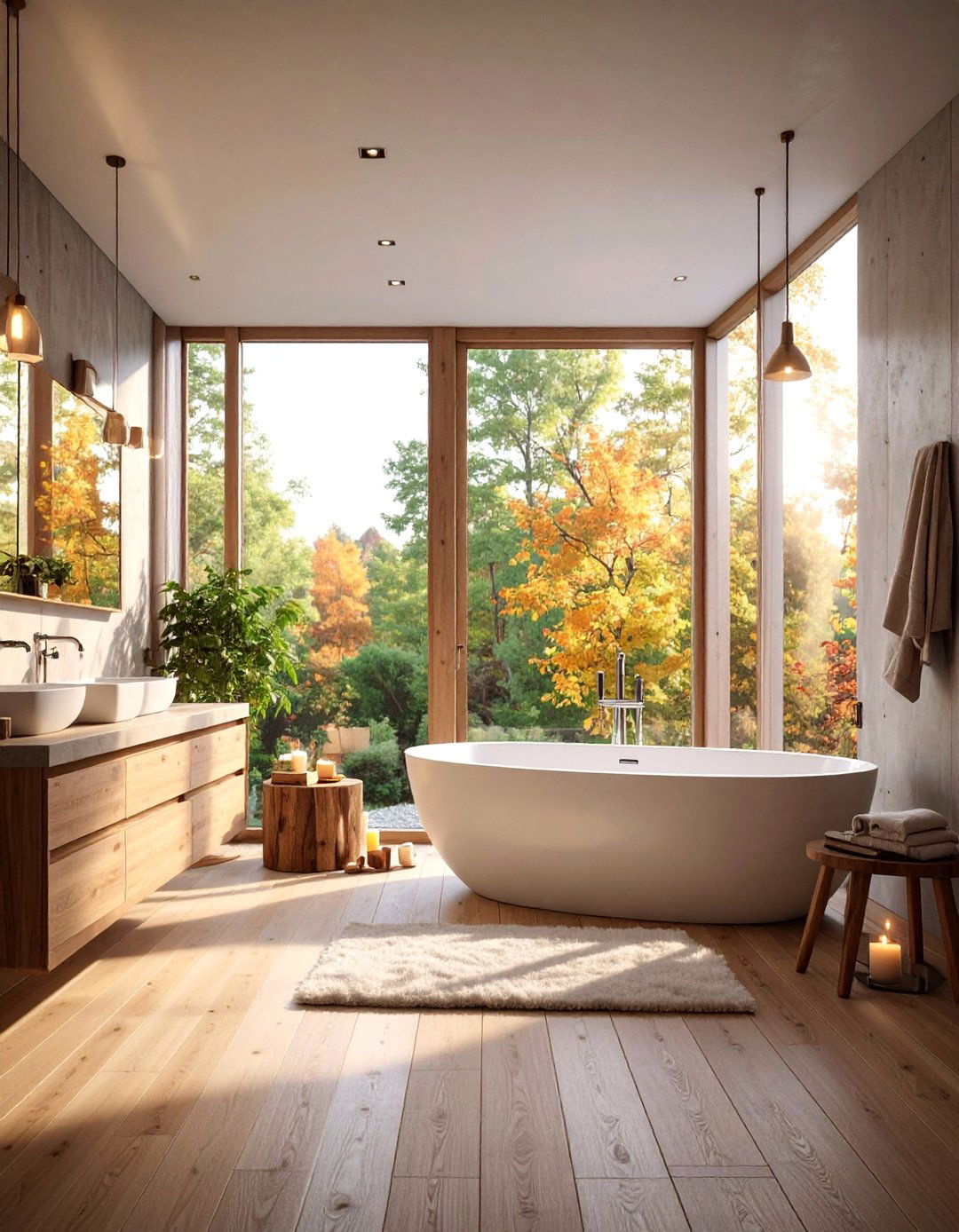


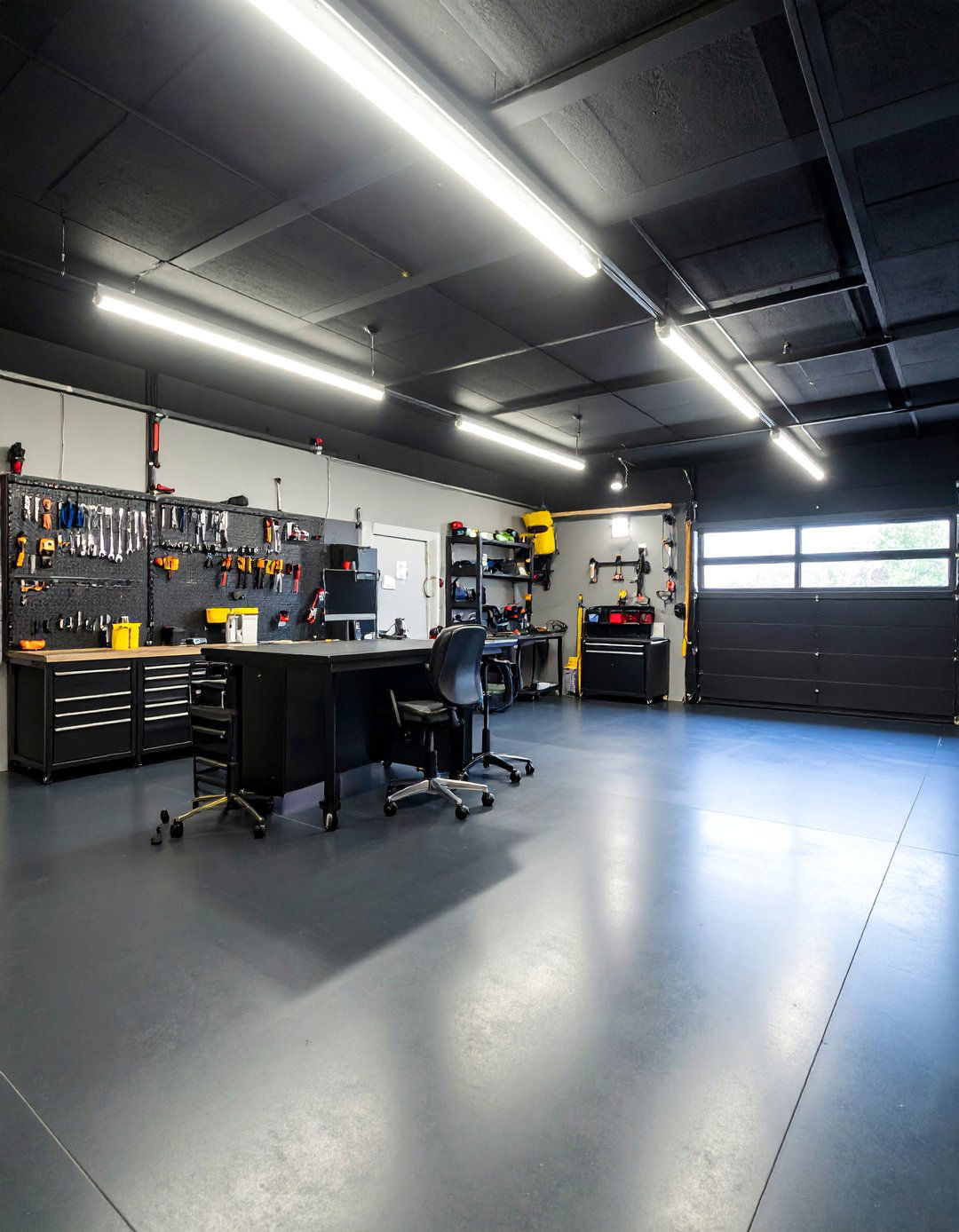
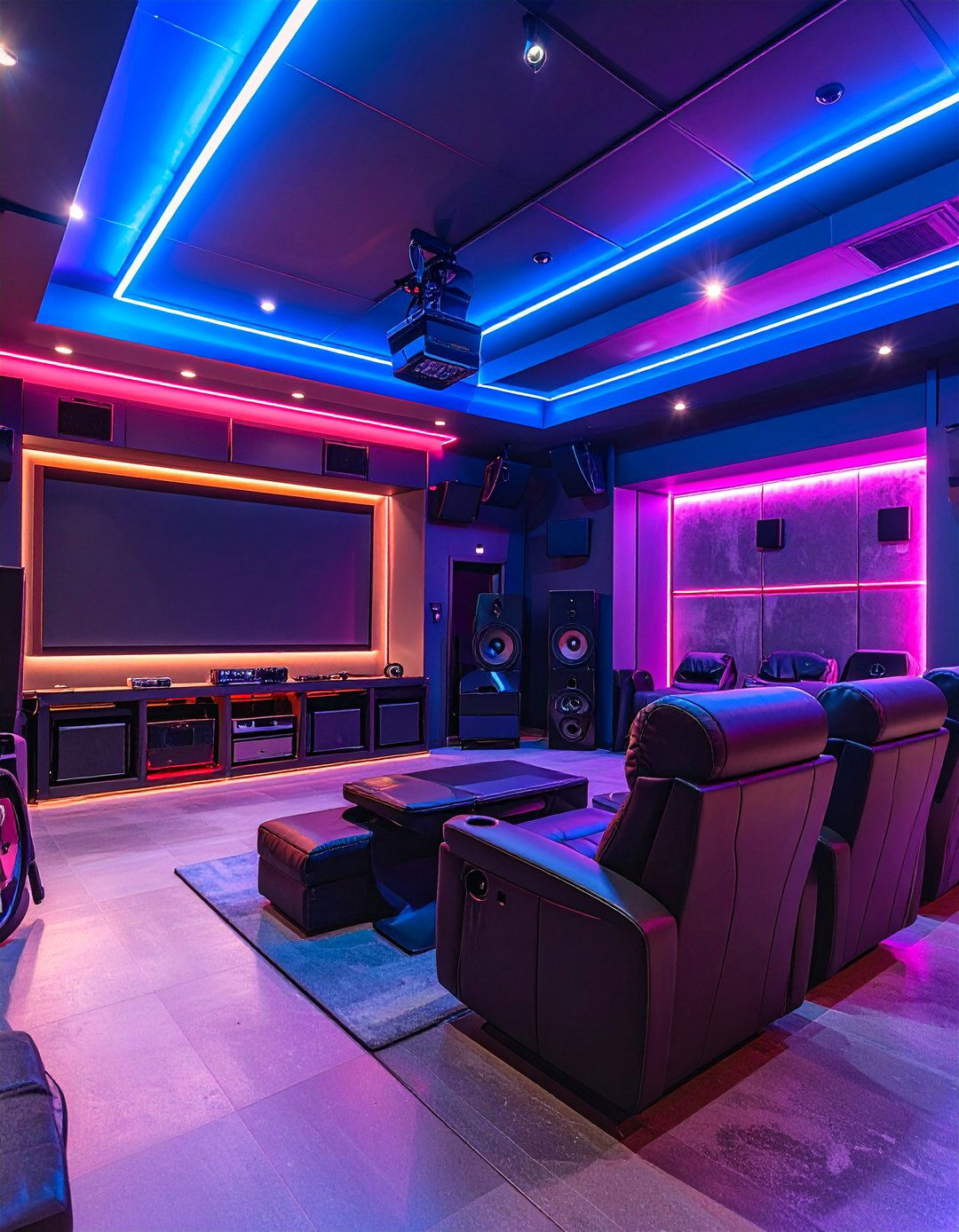
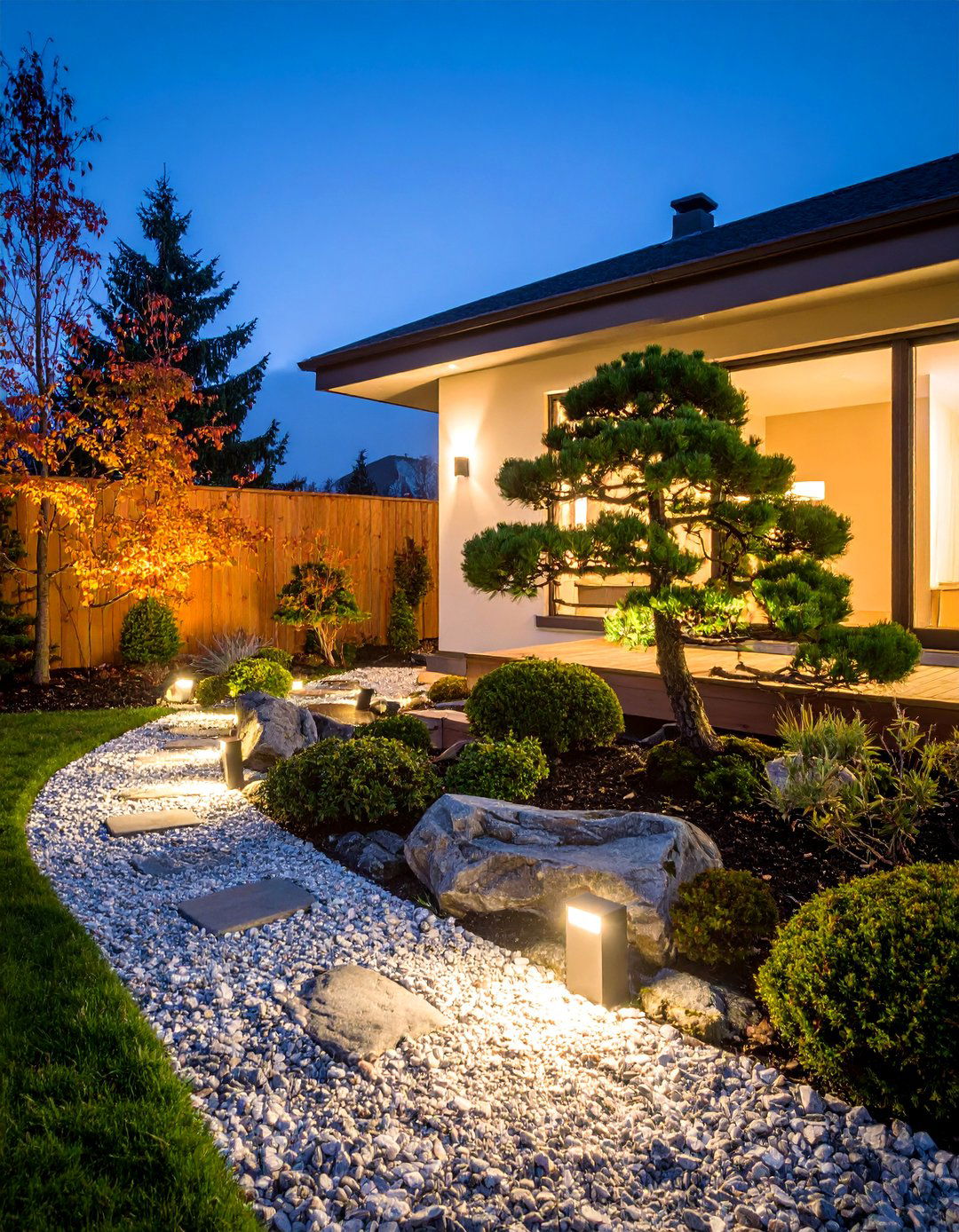
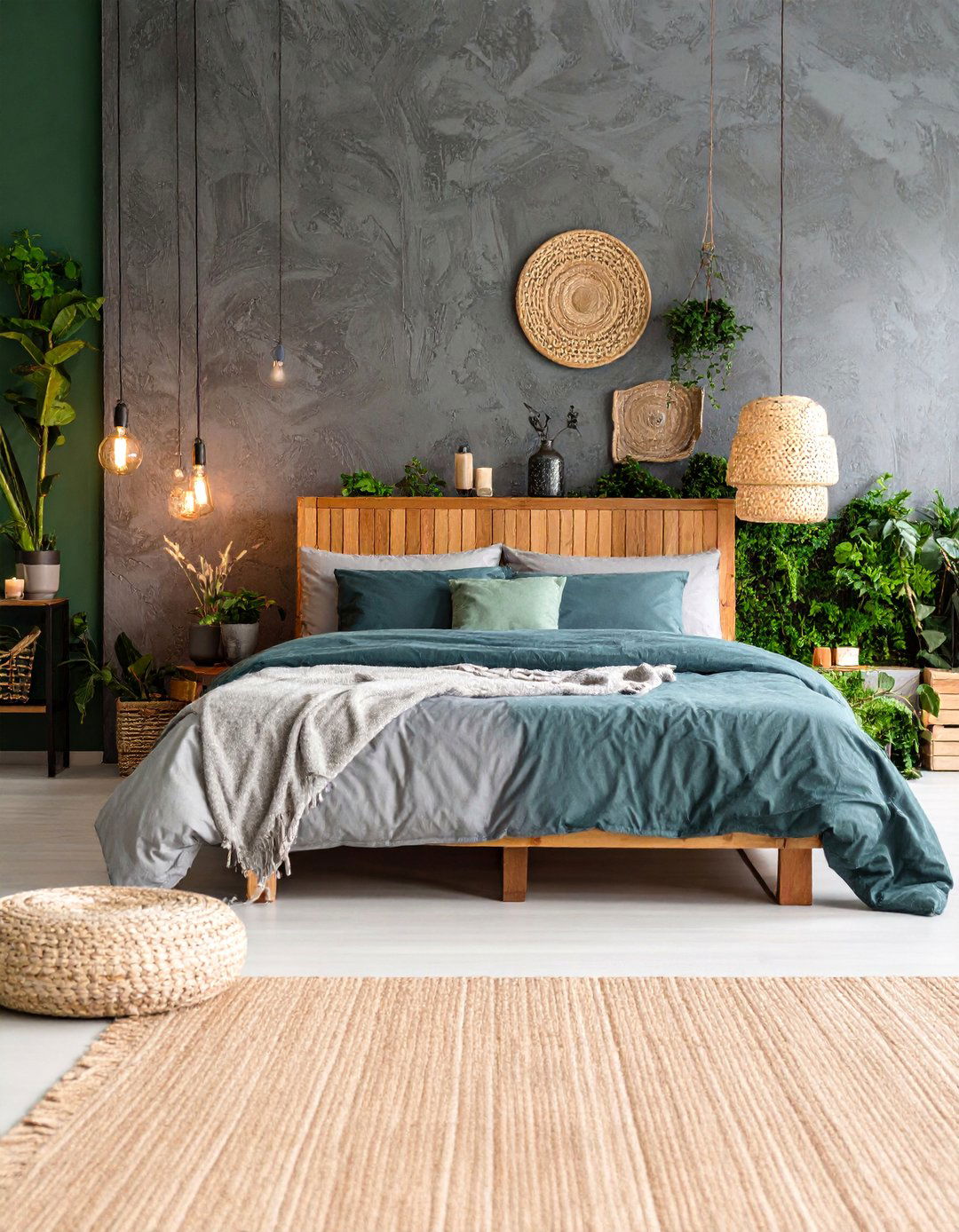


Leave a Reply